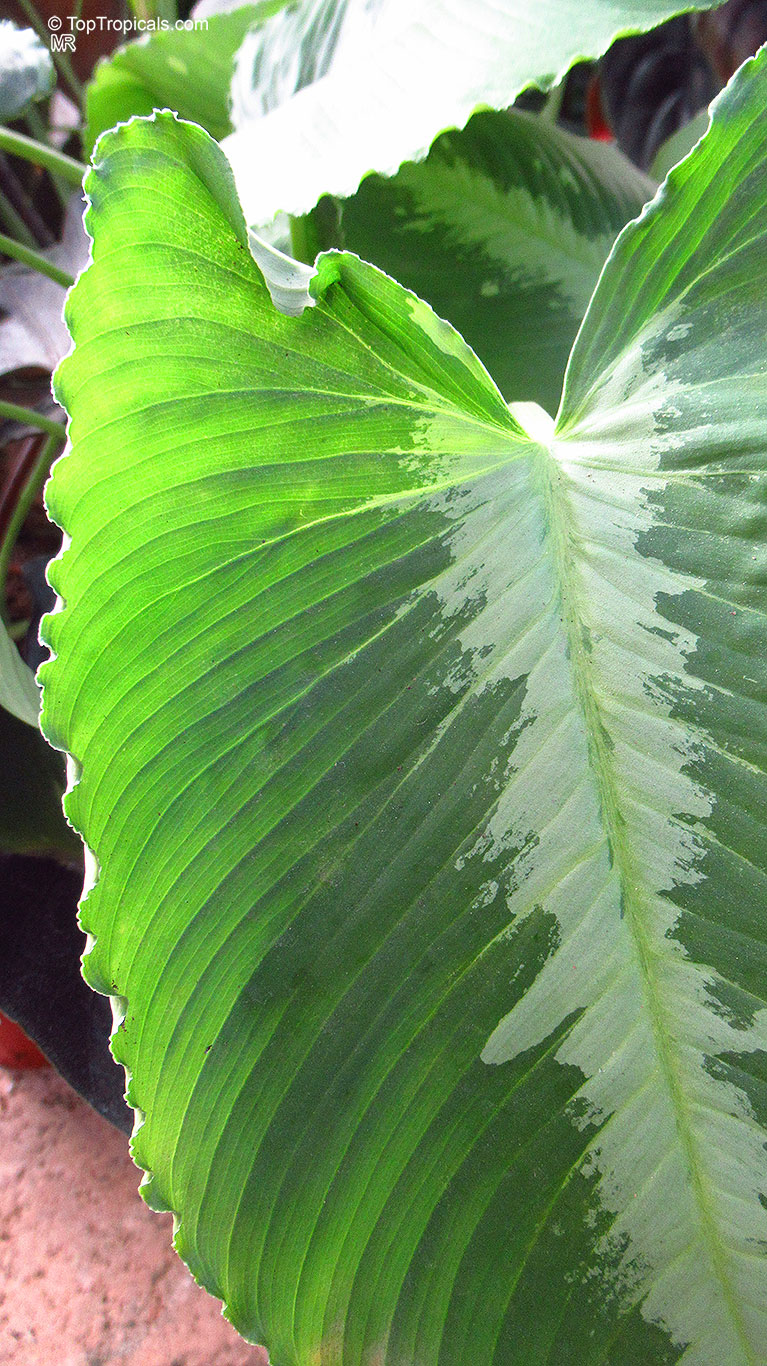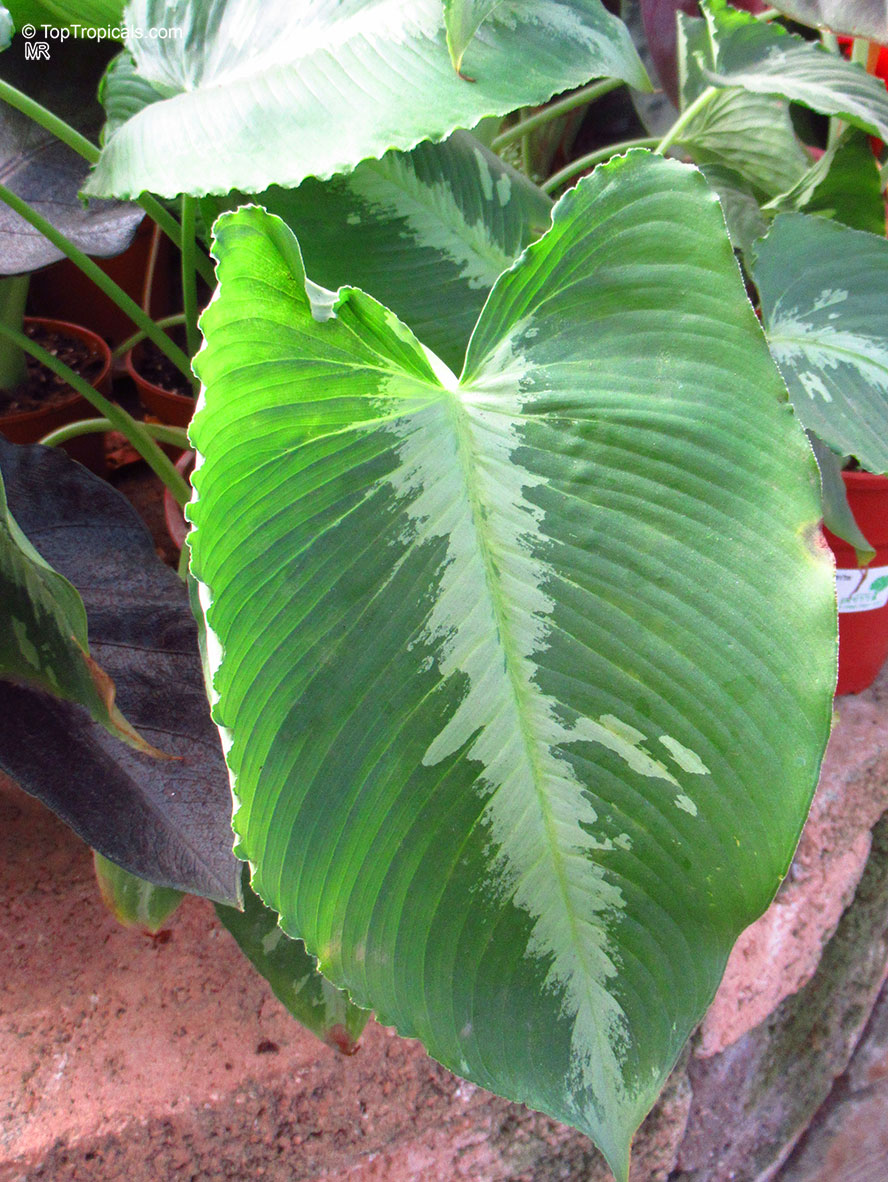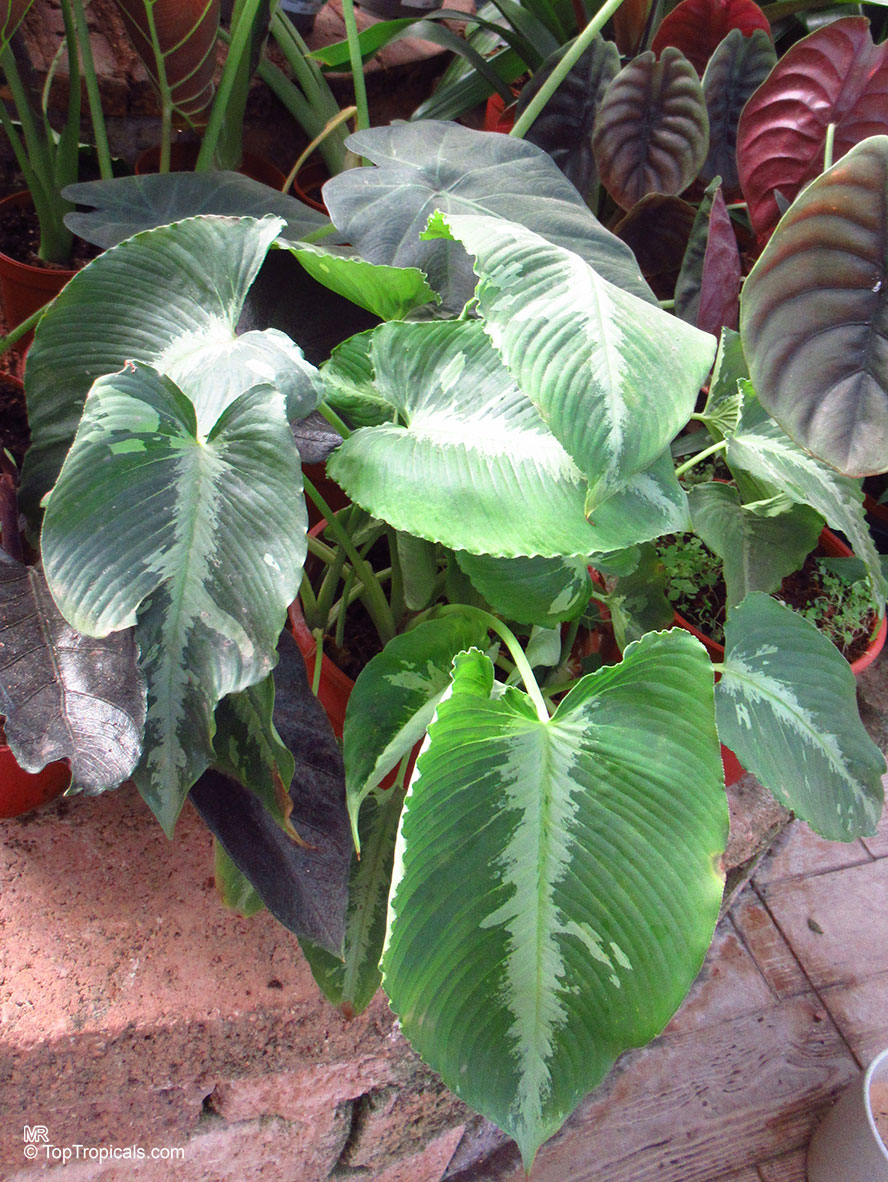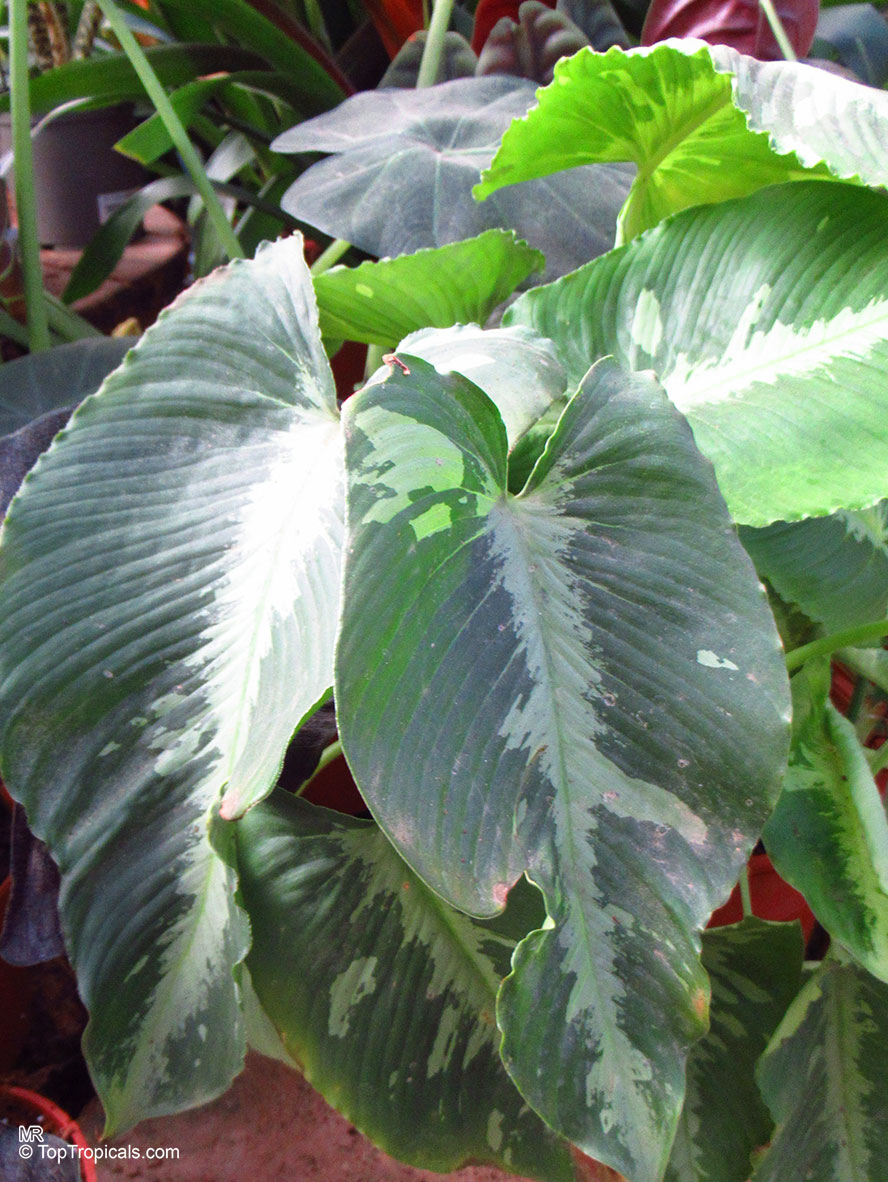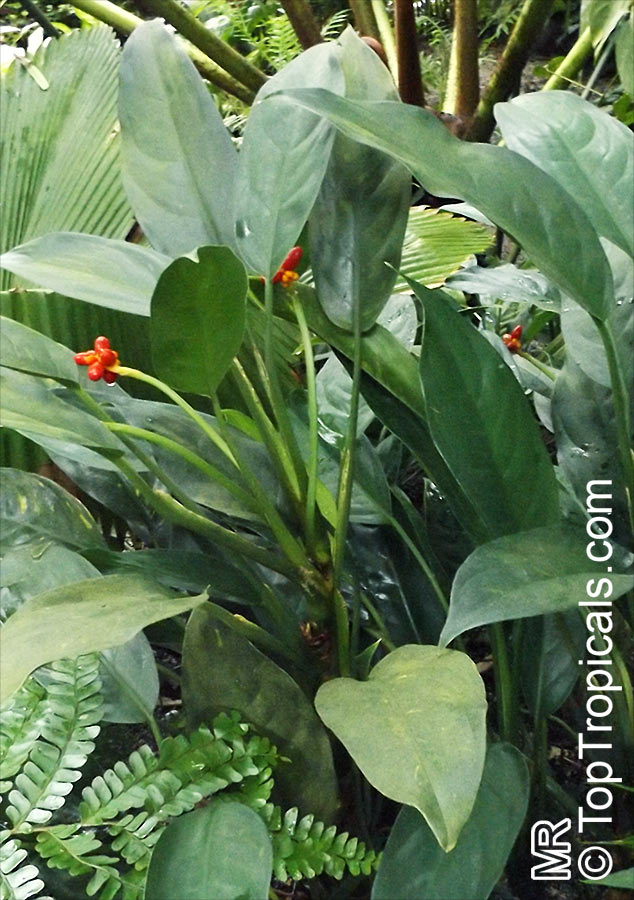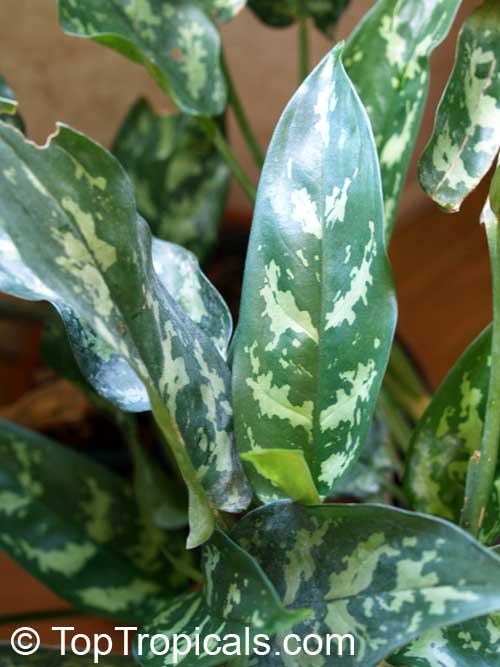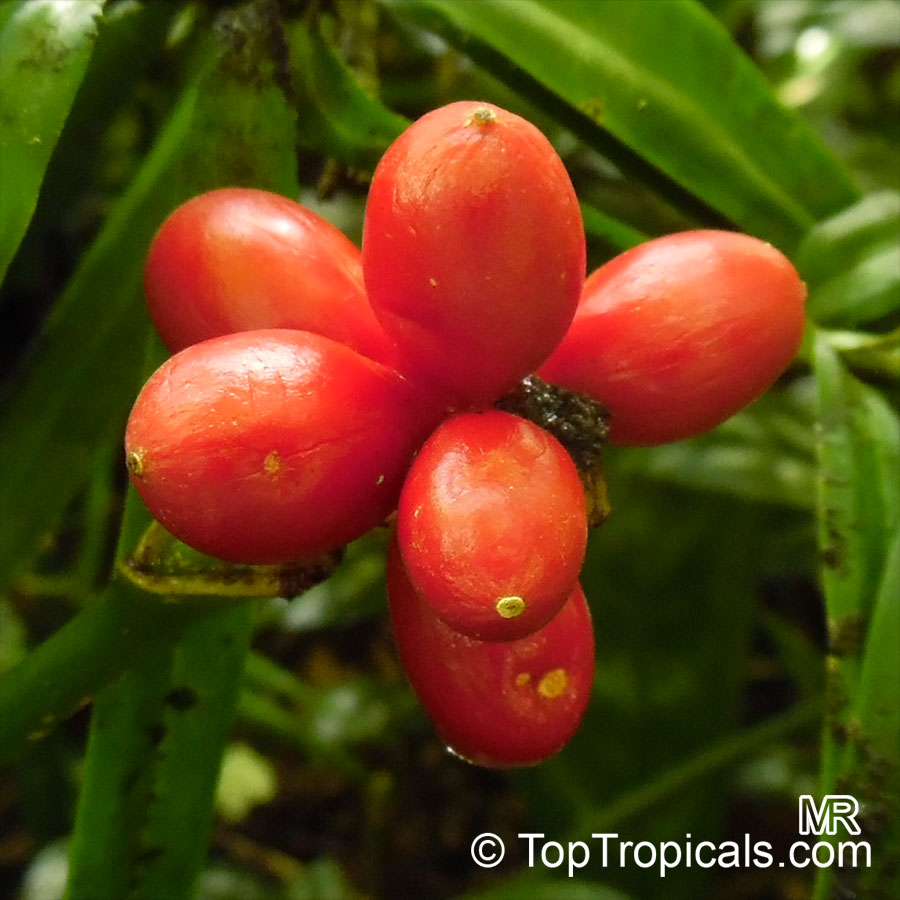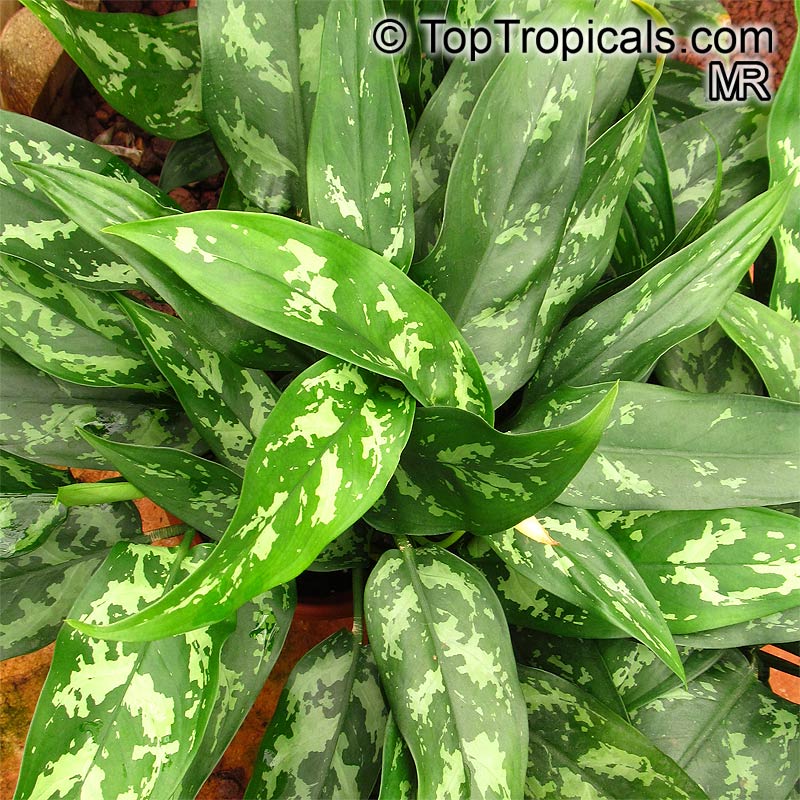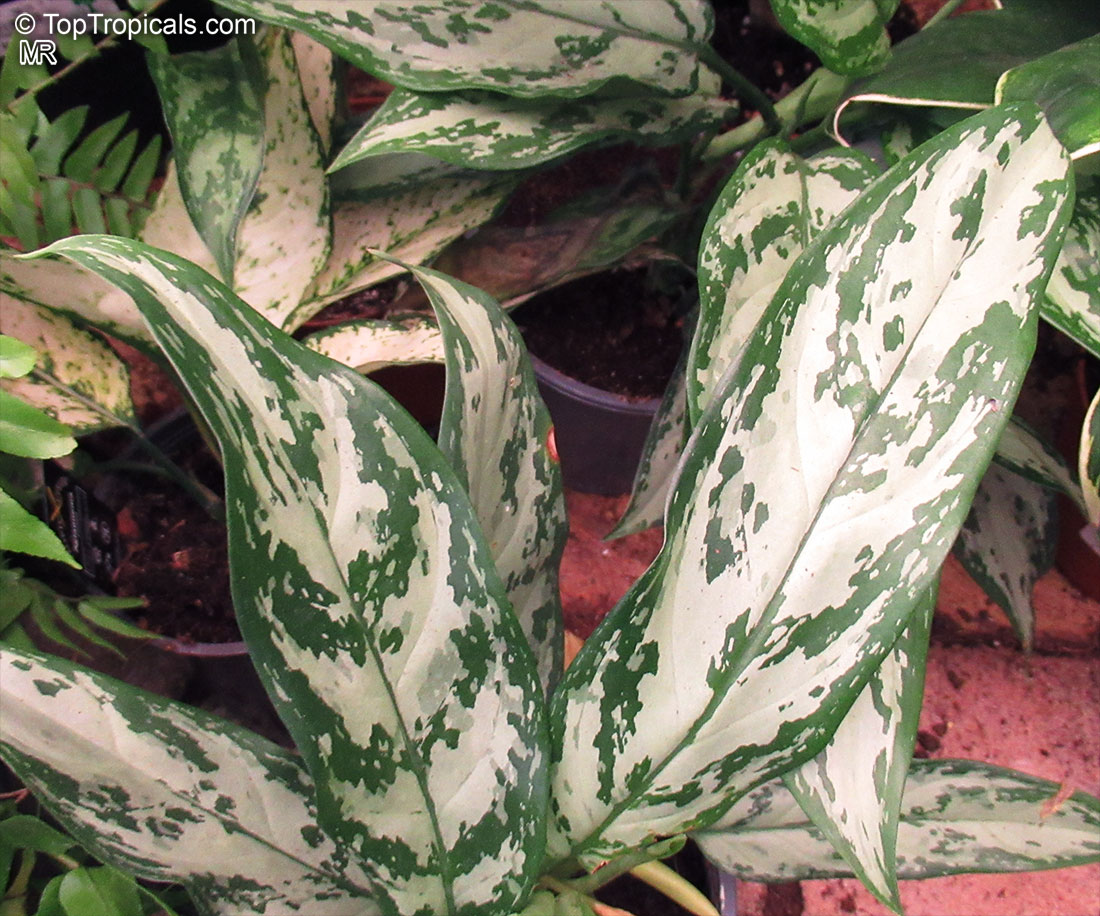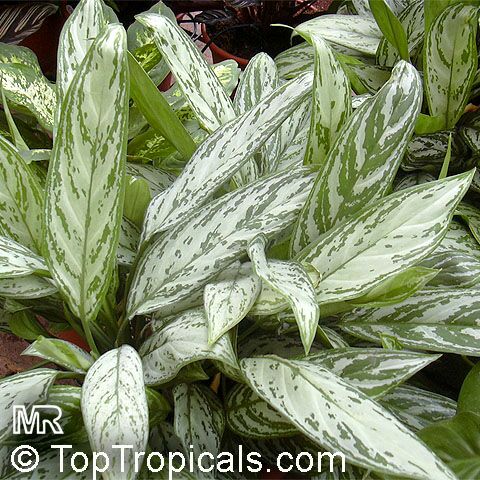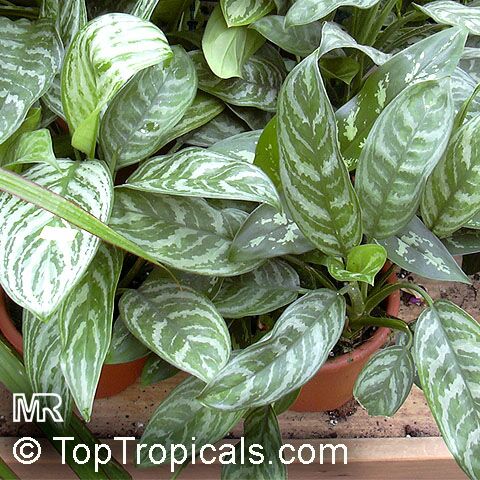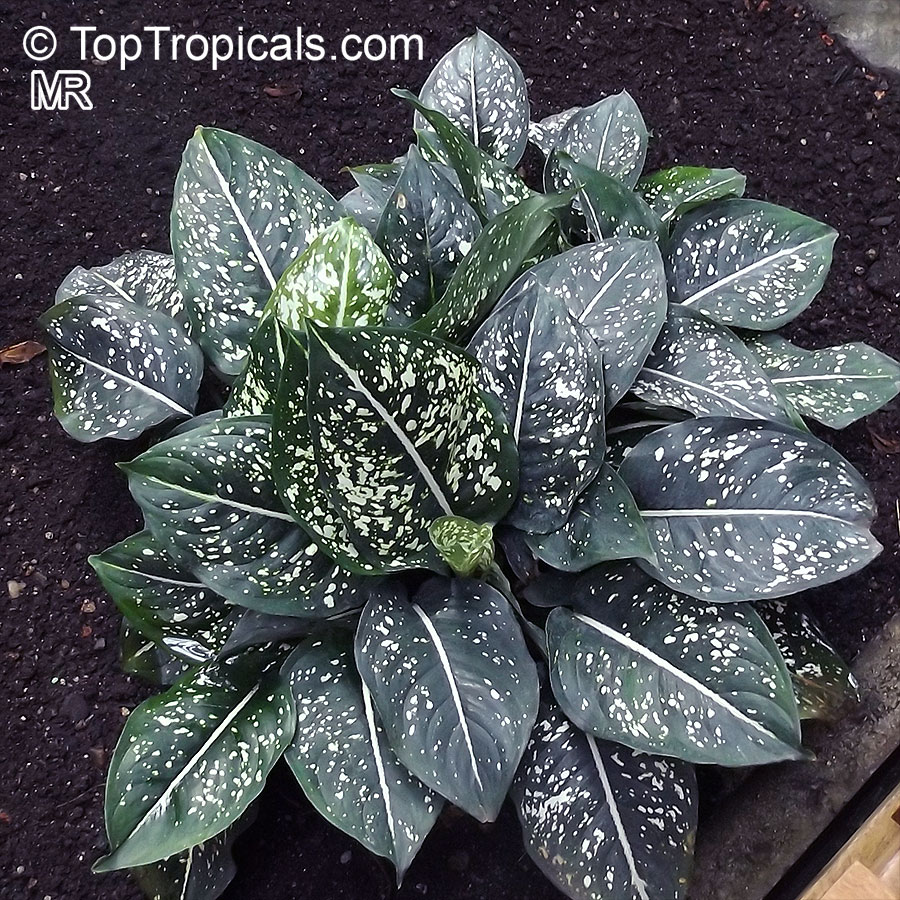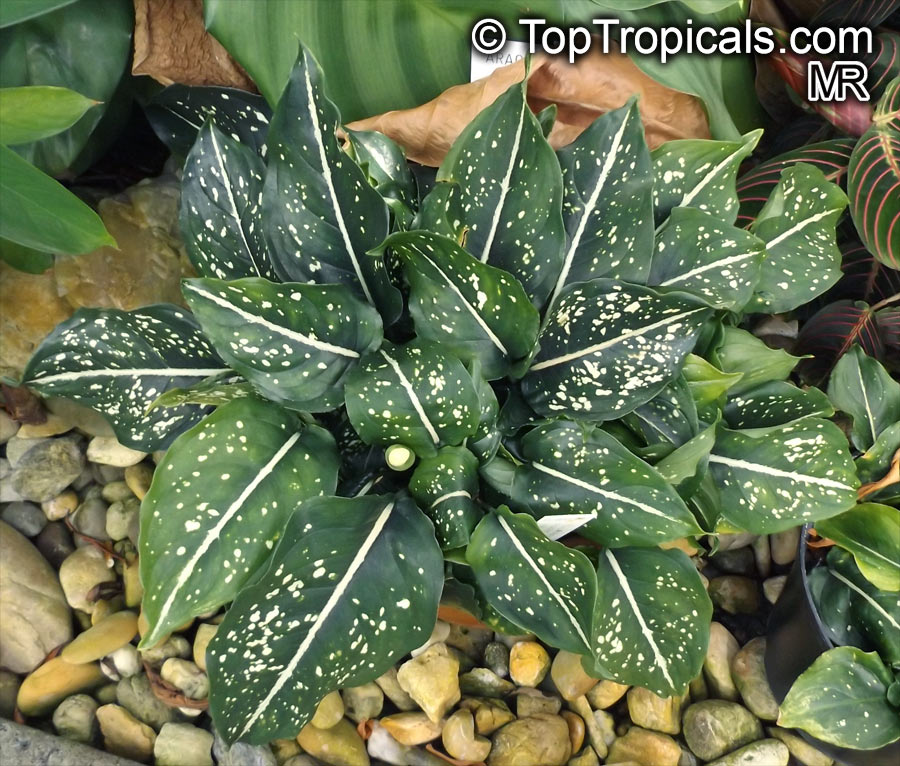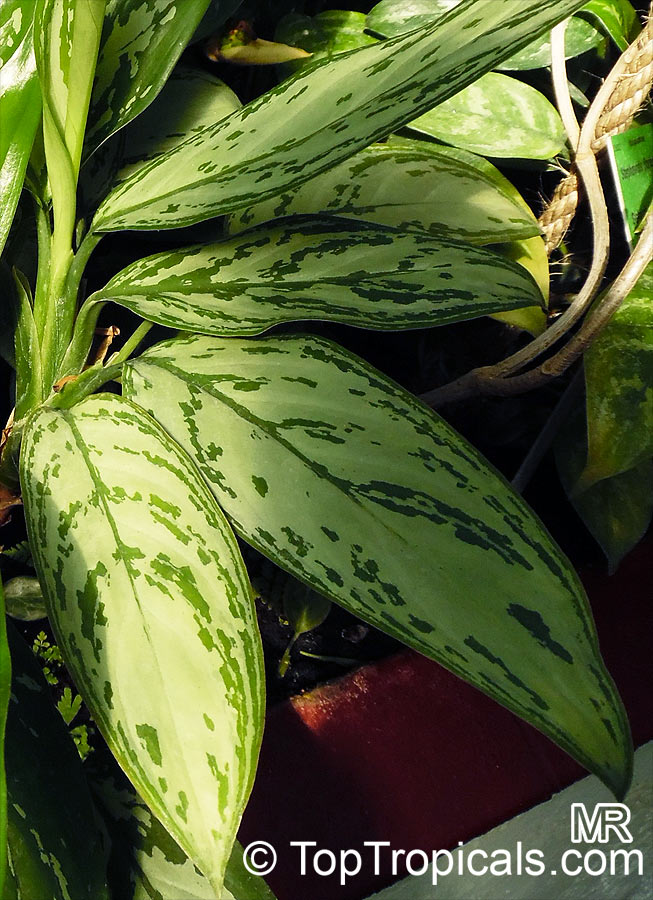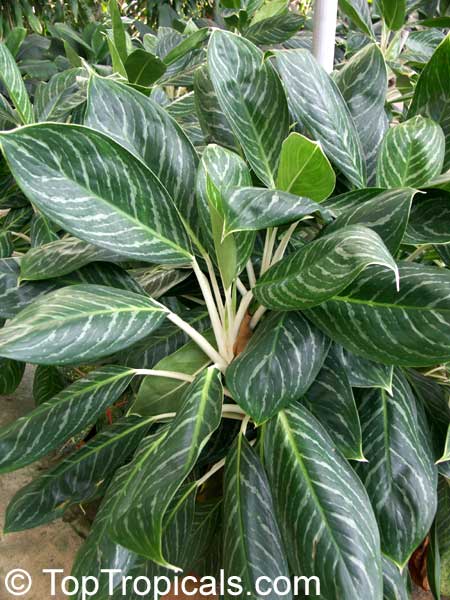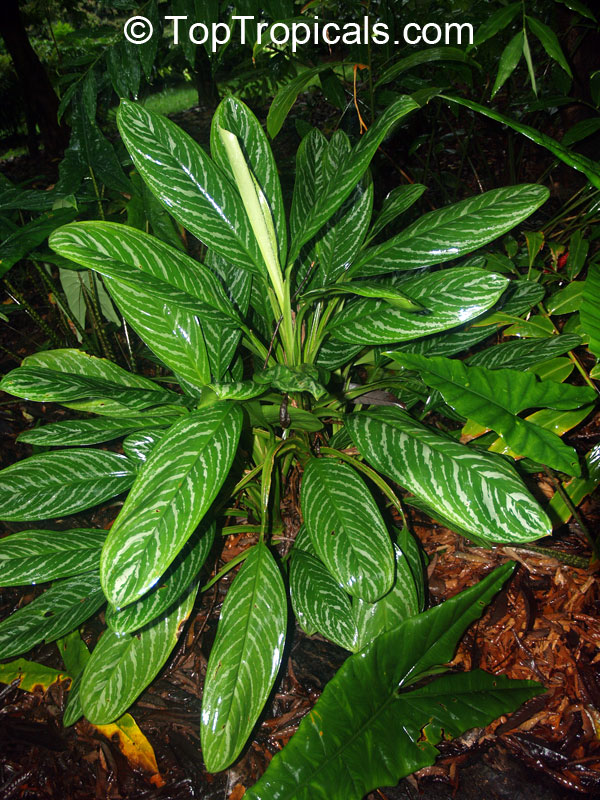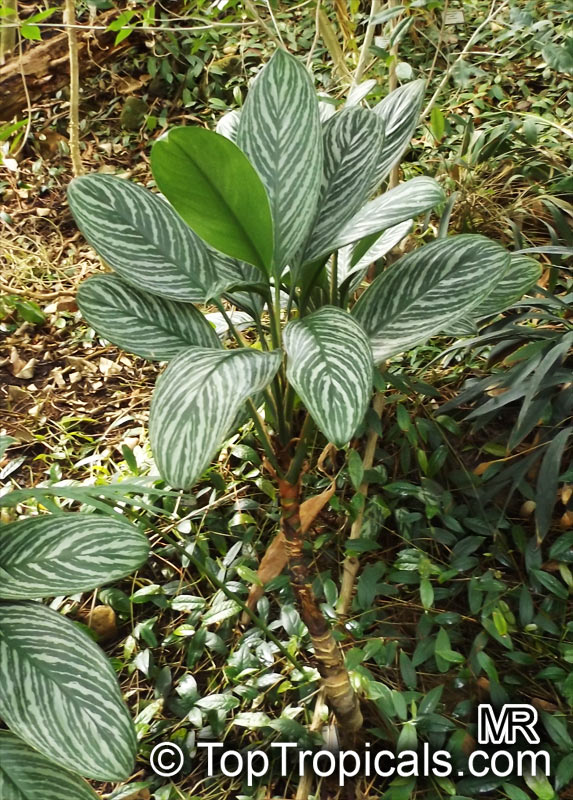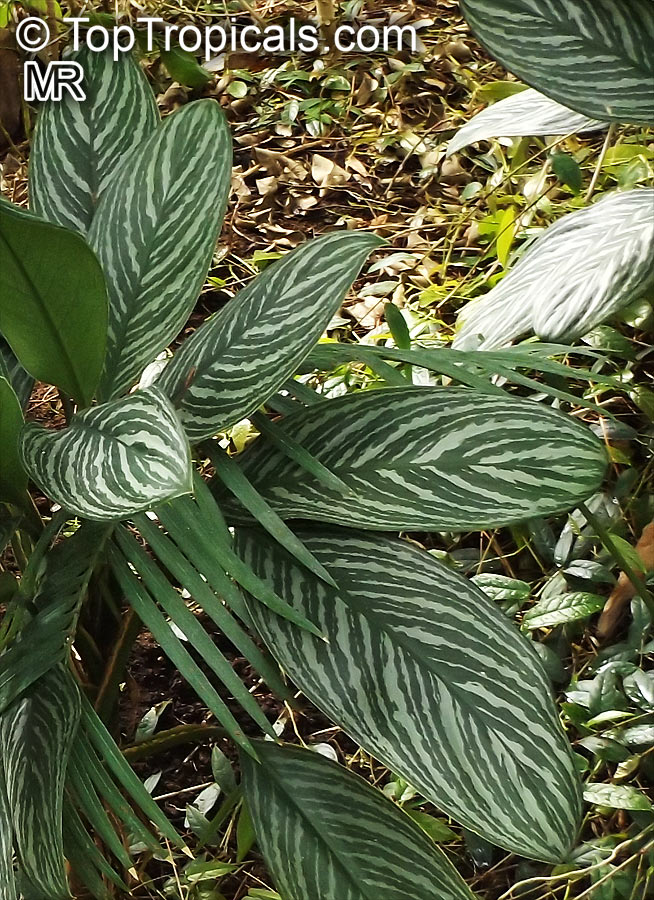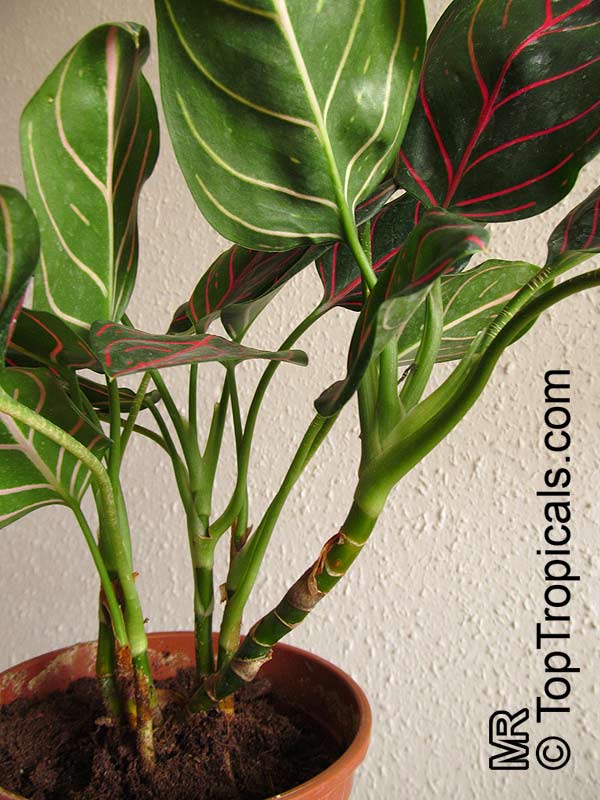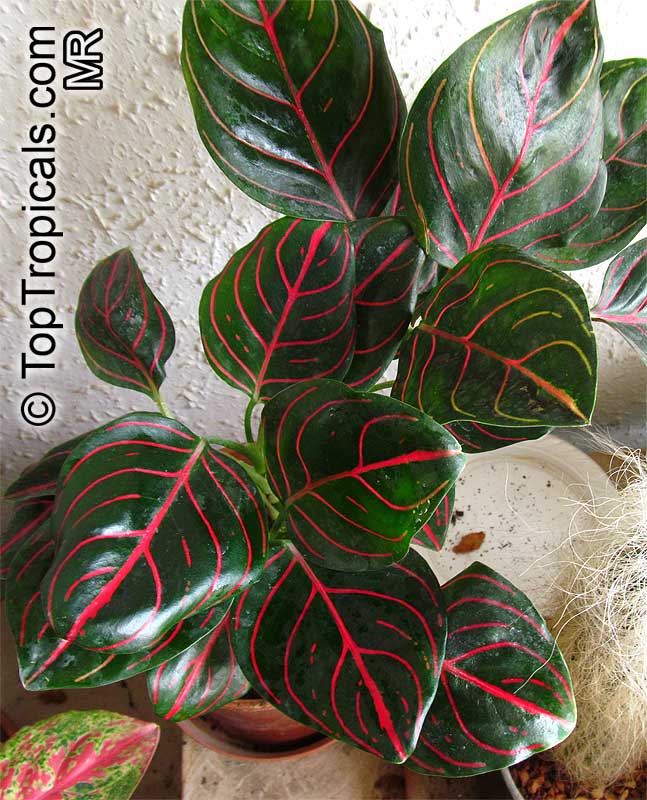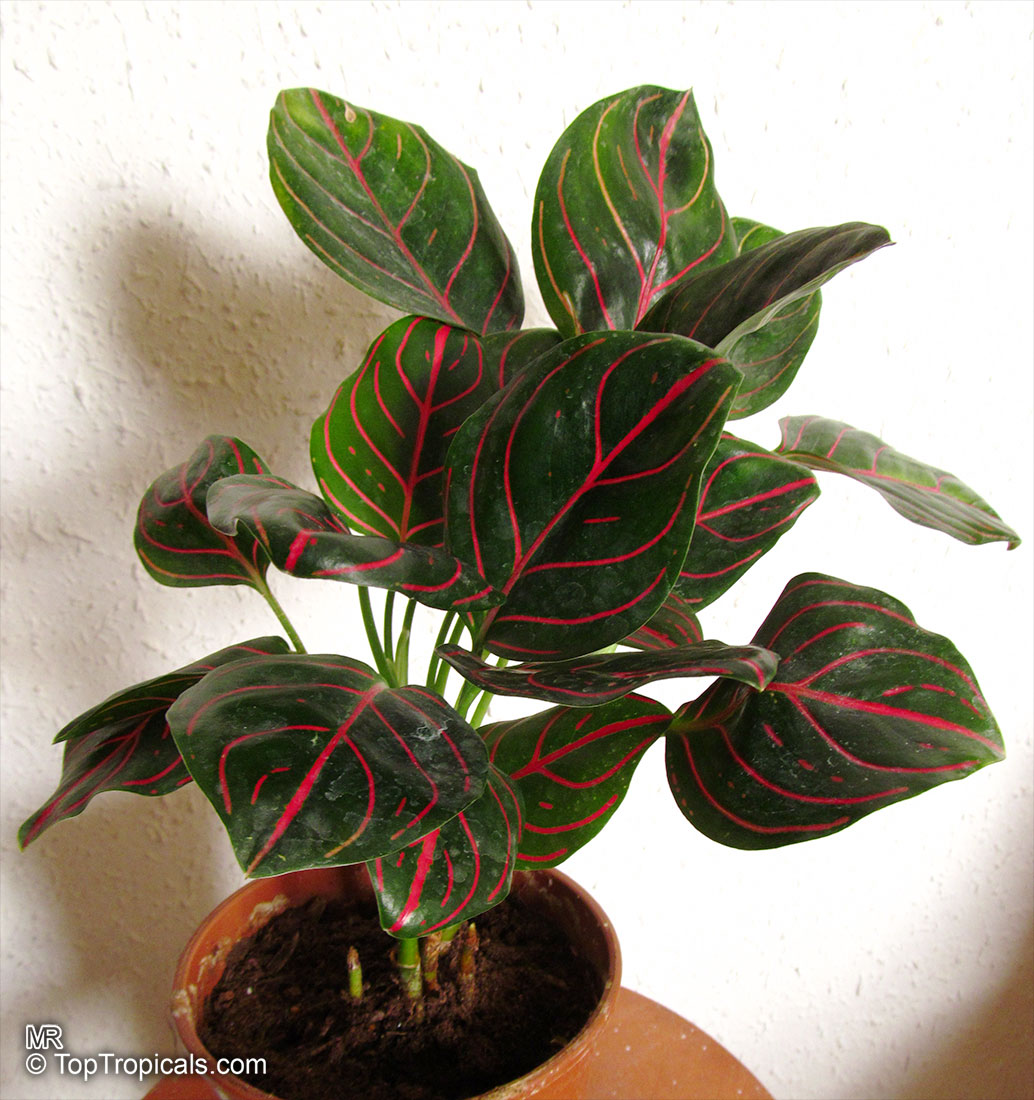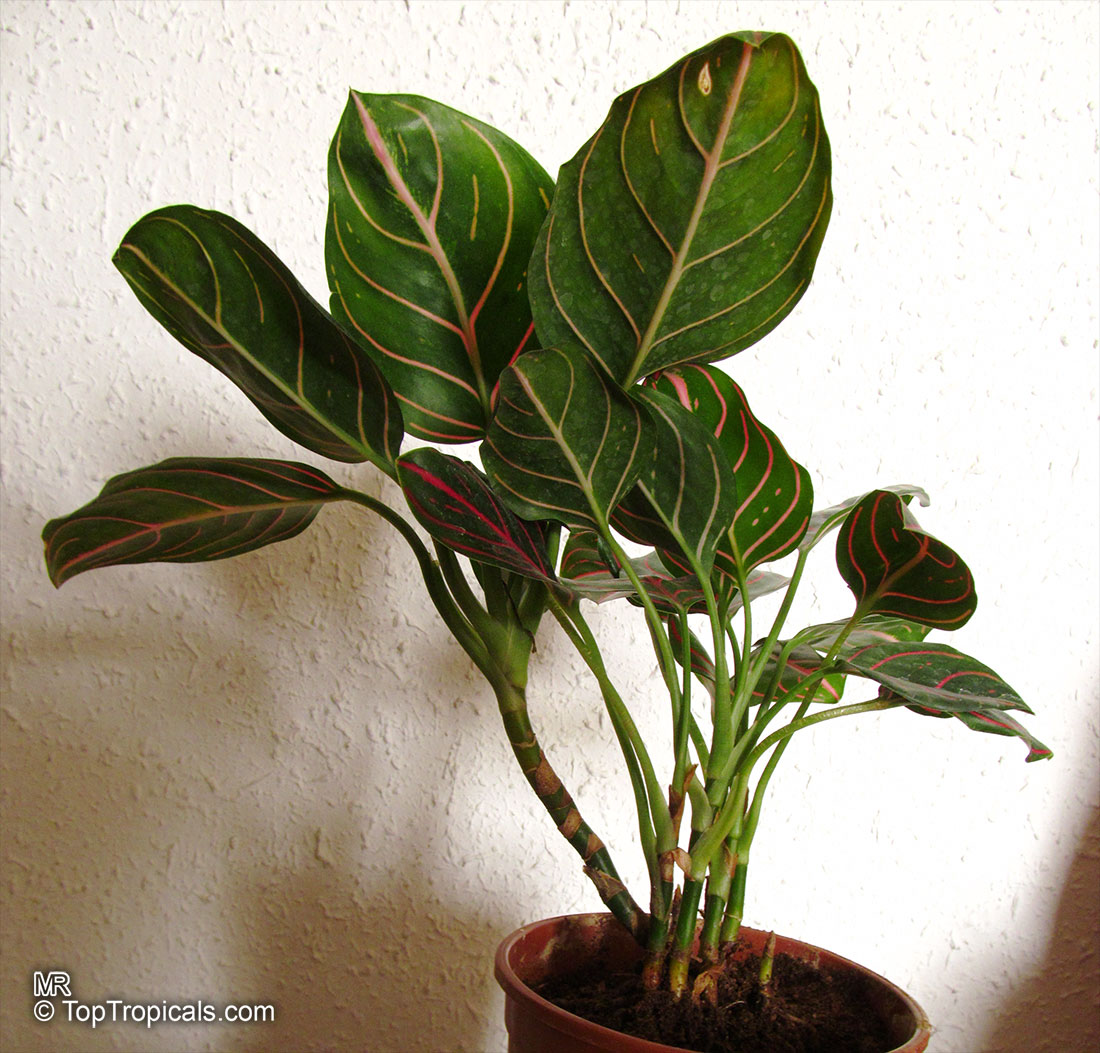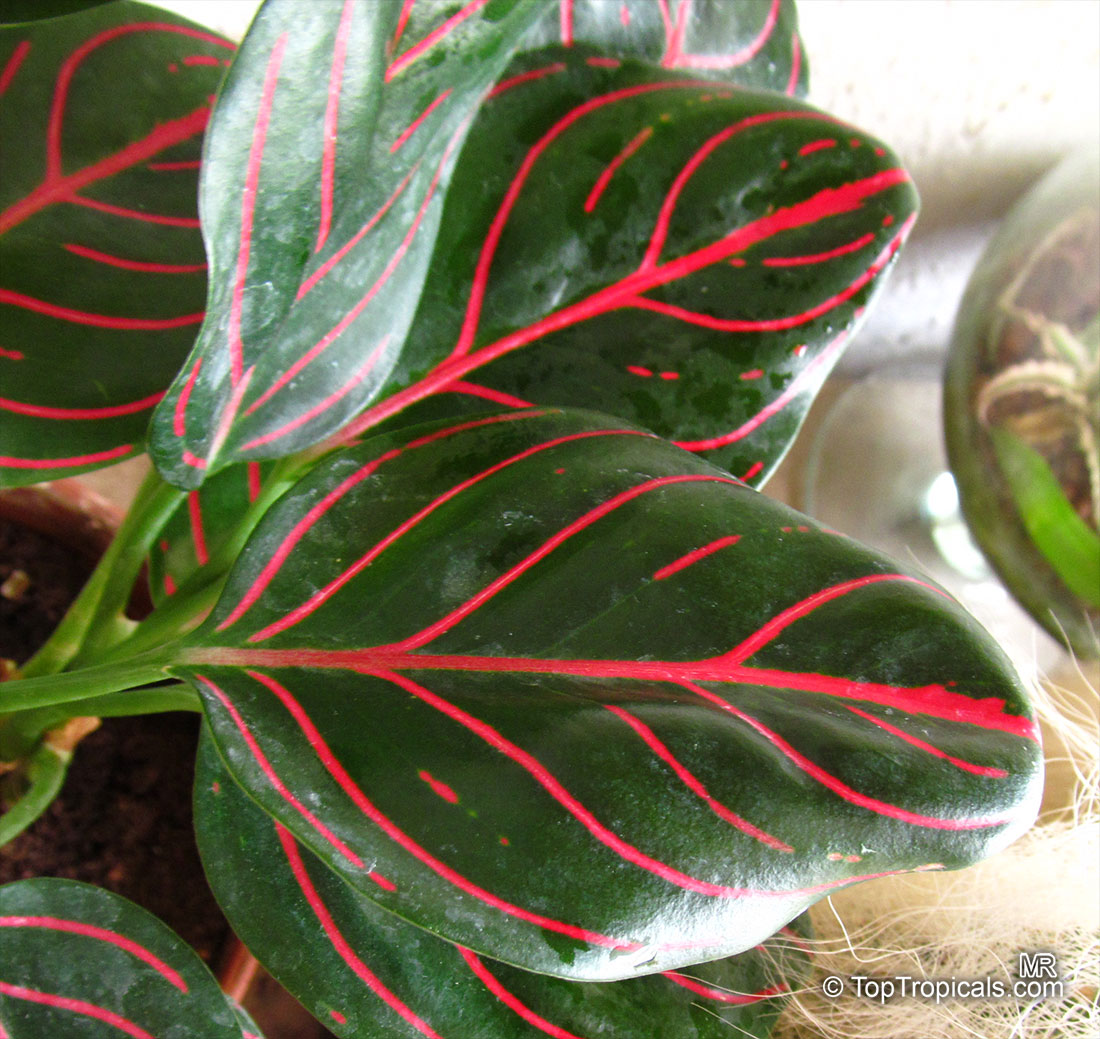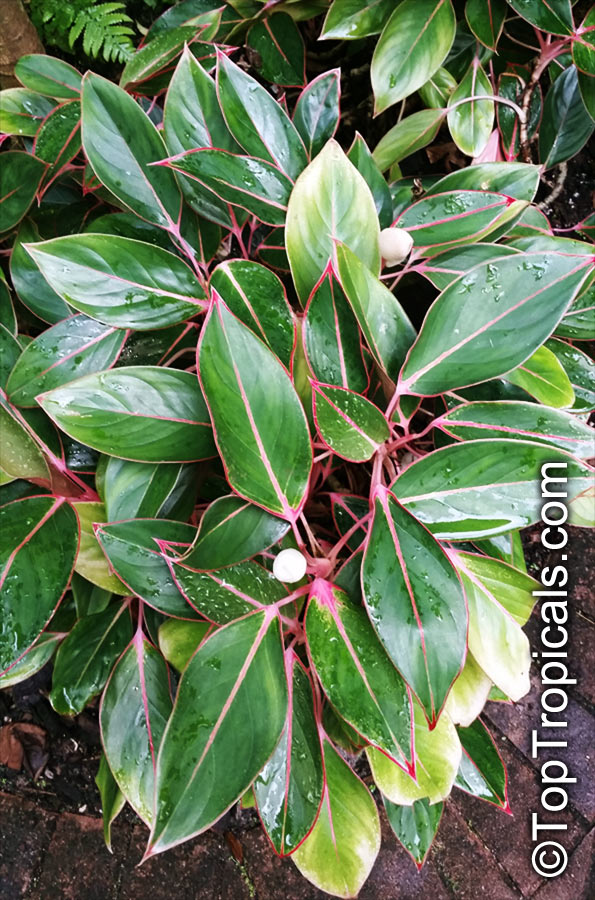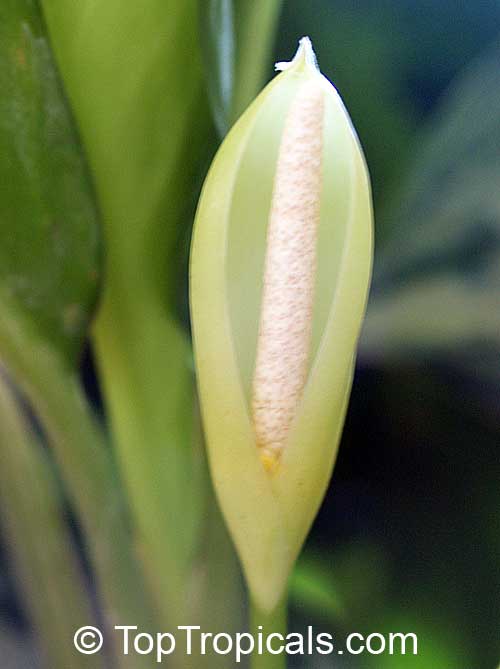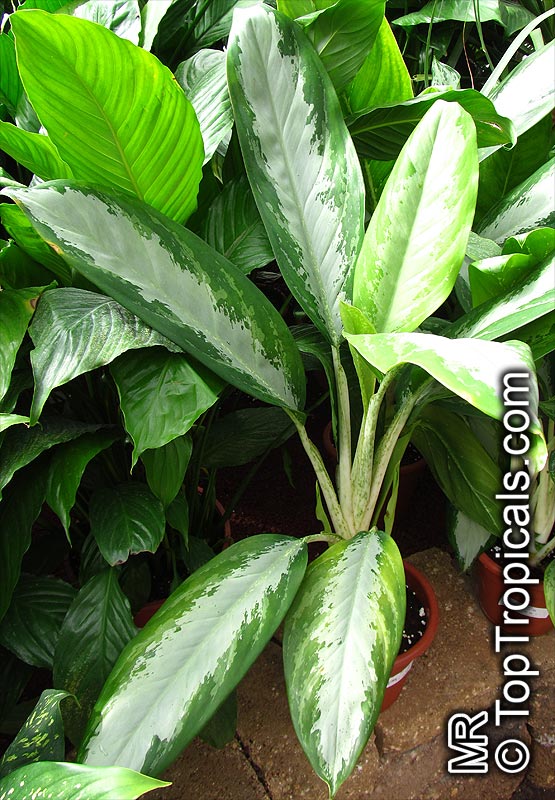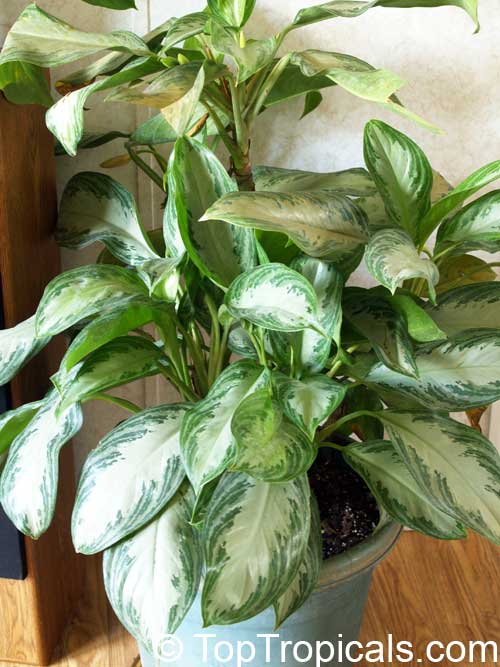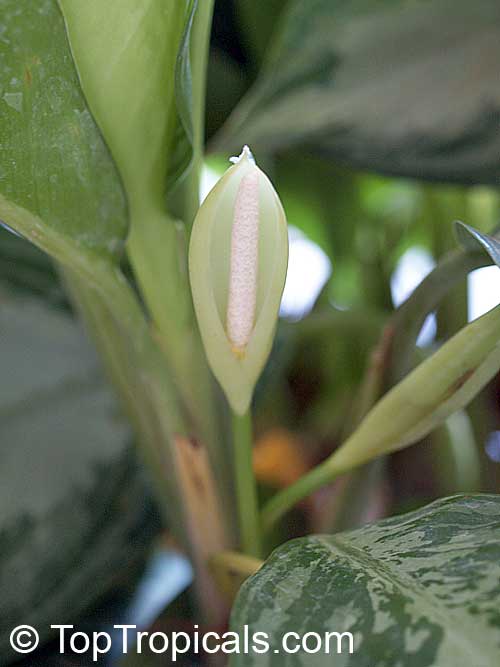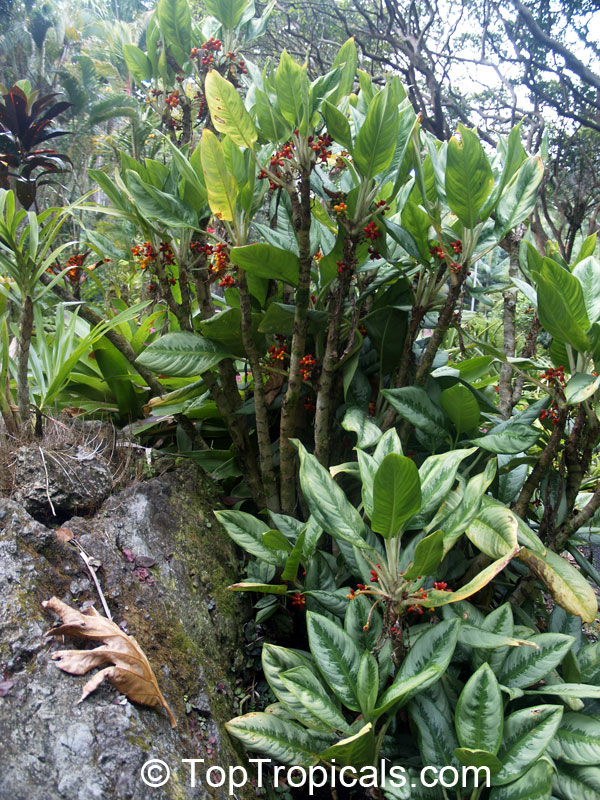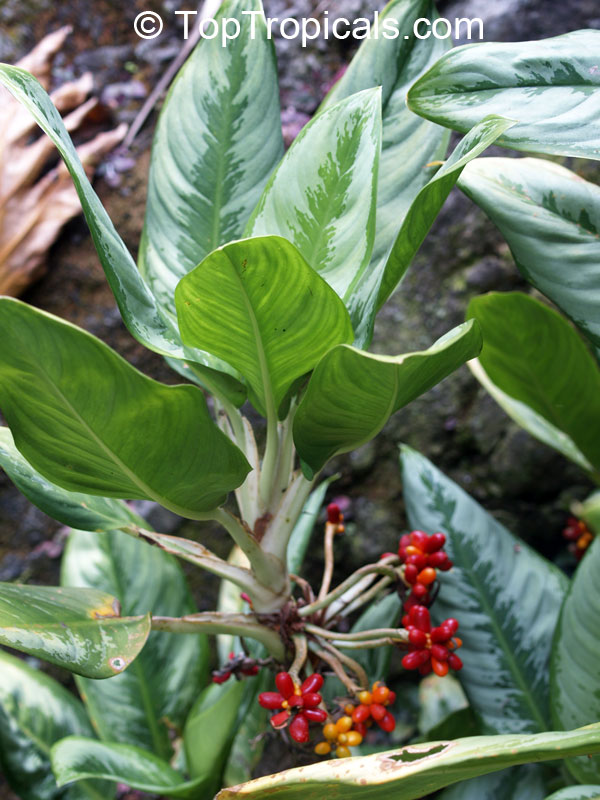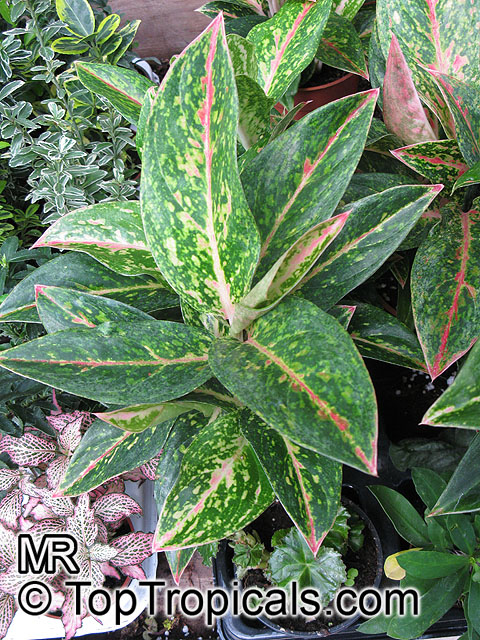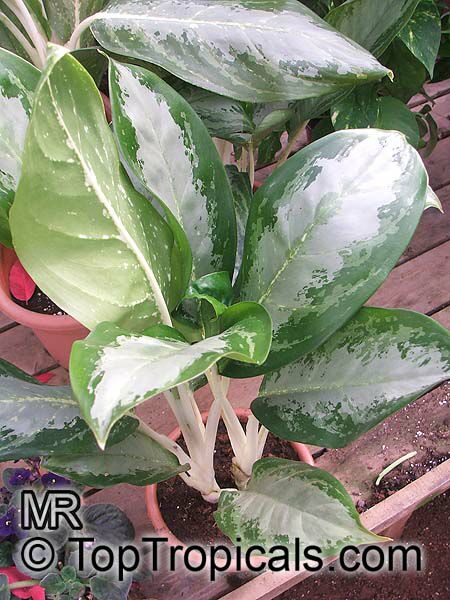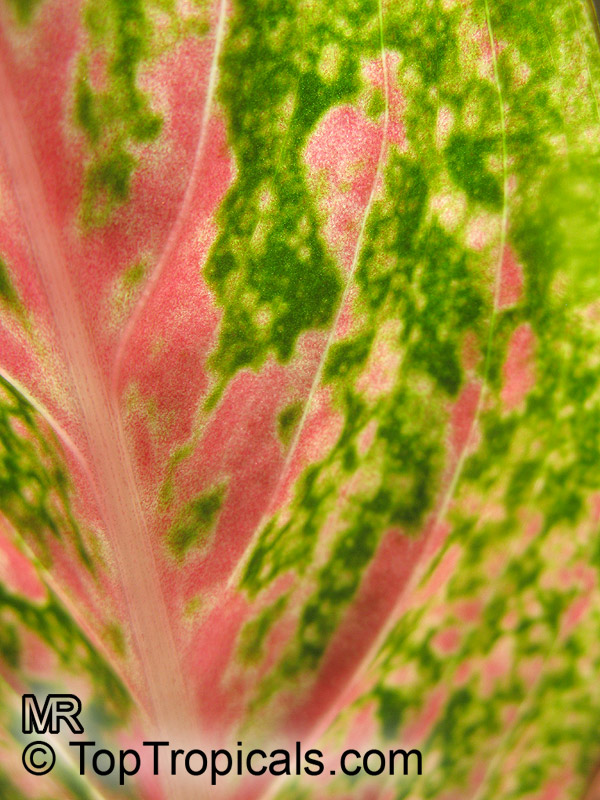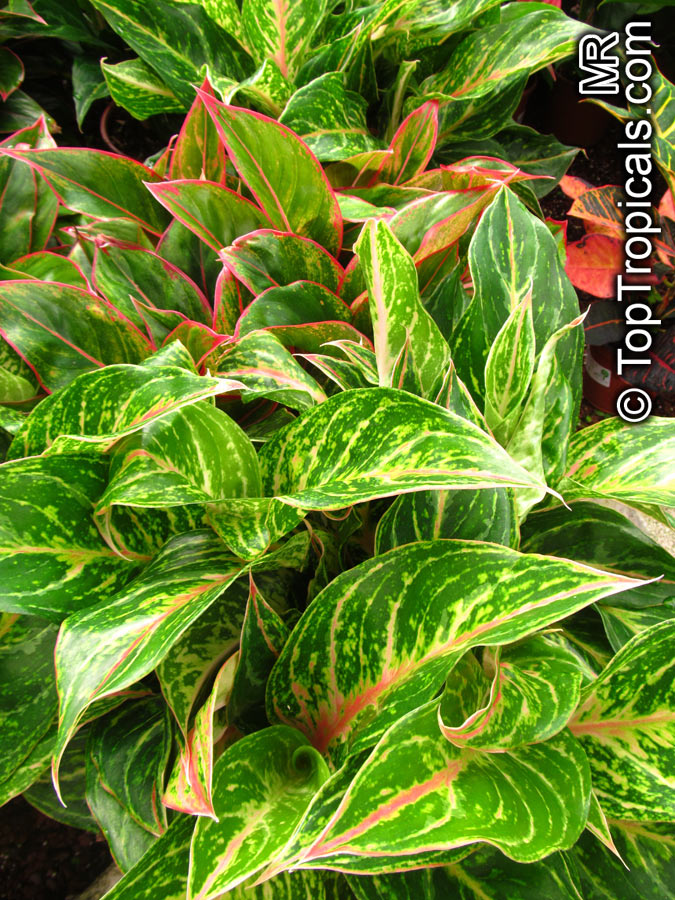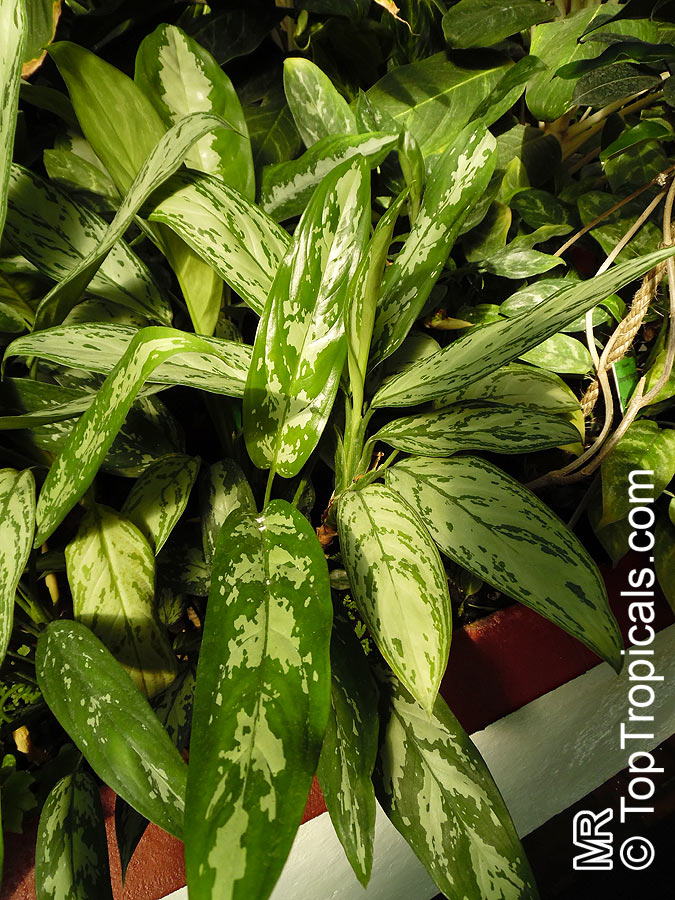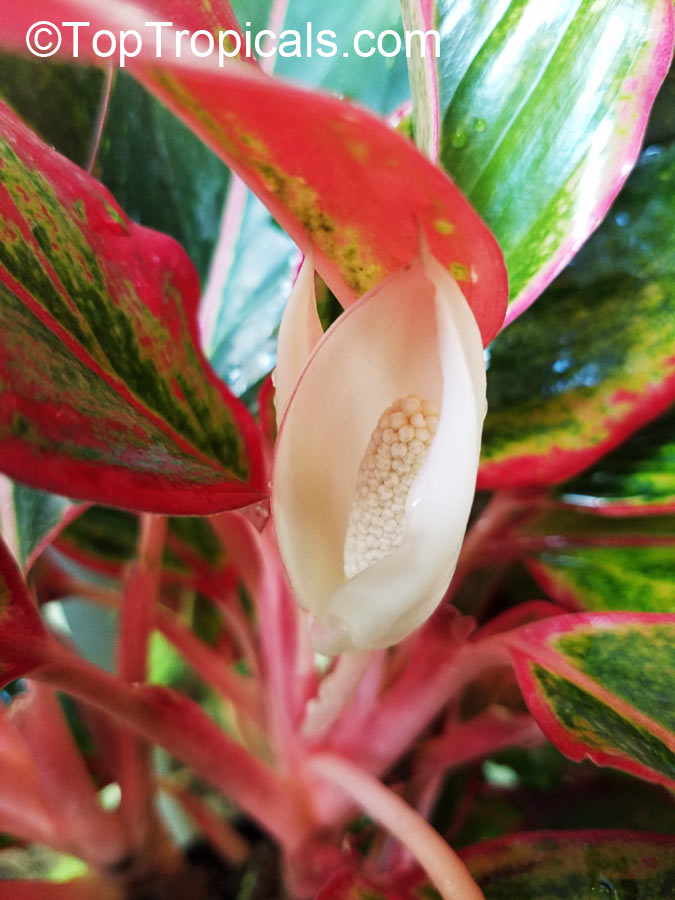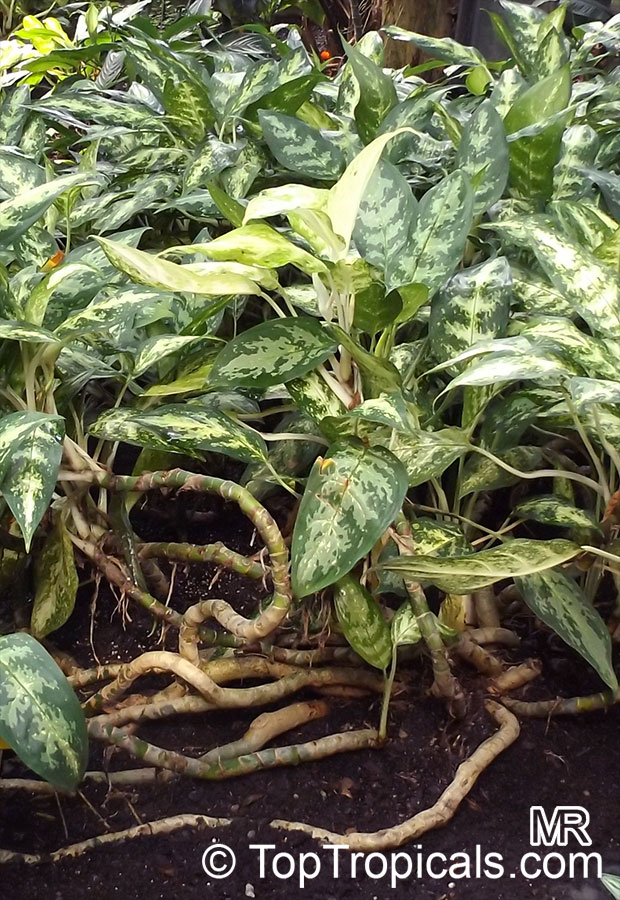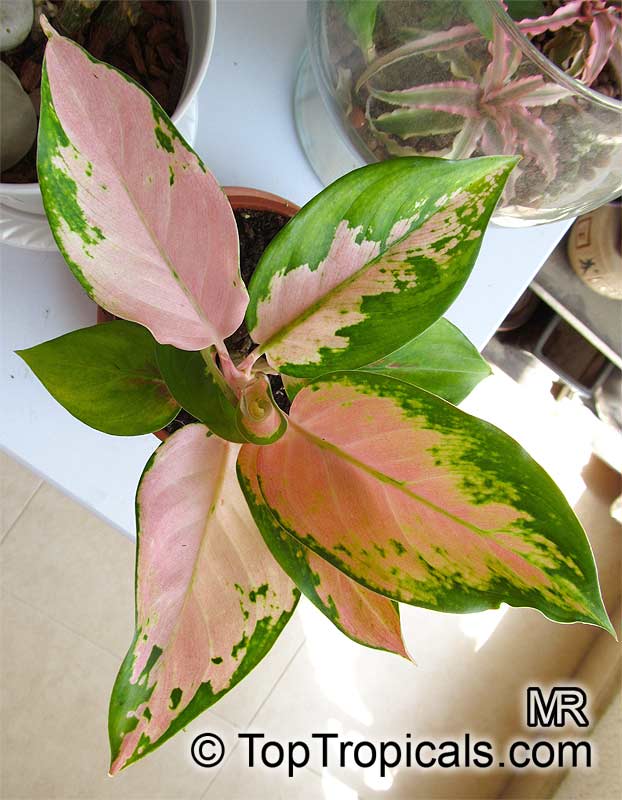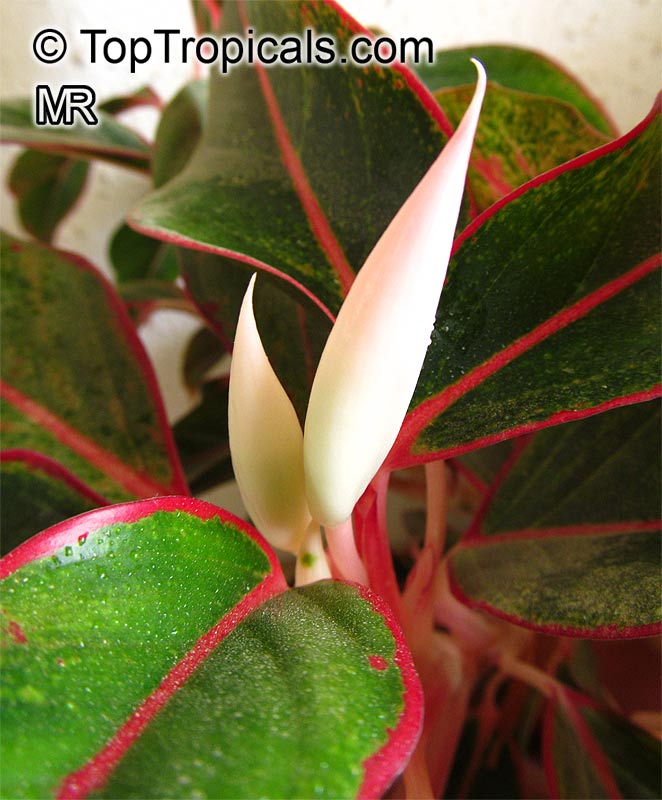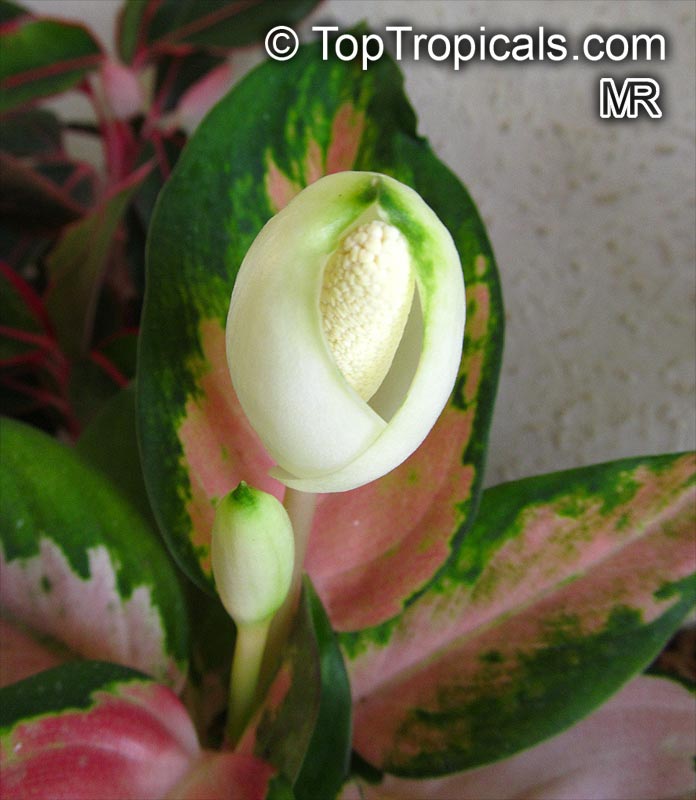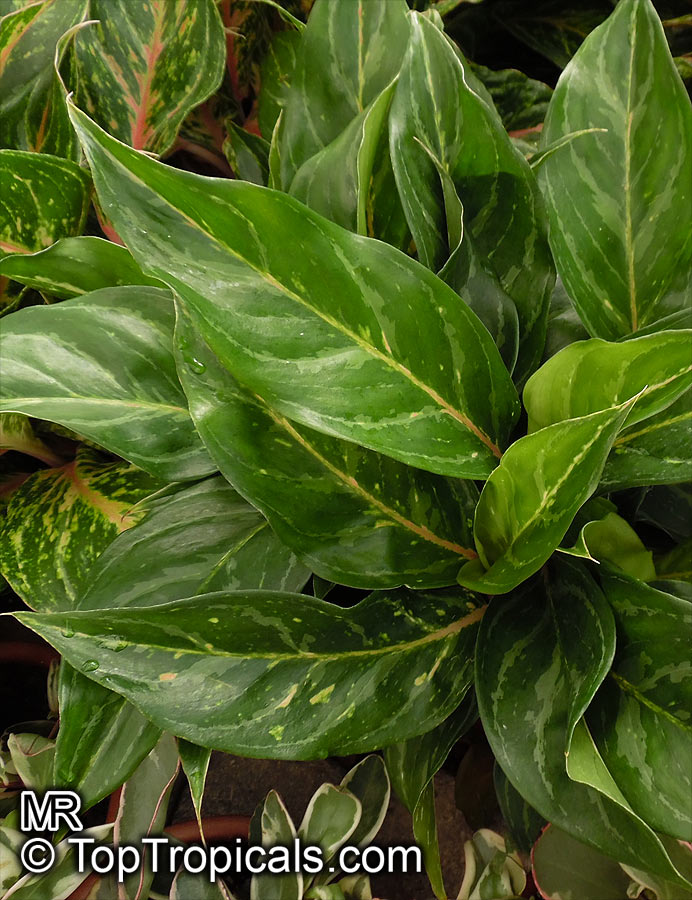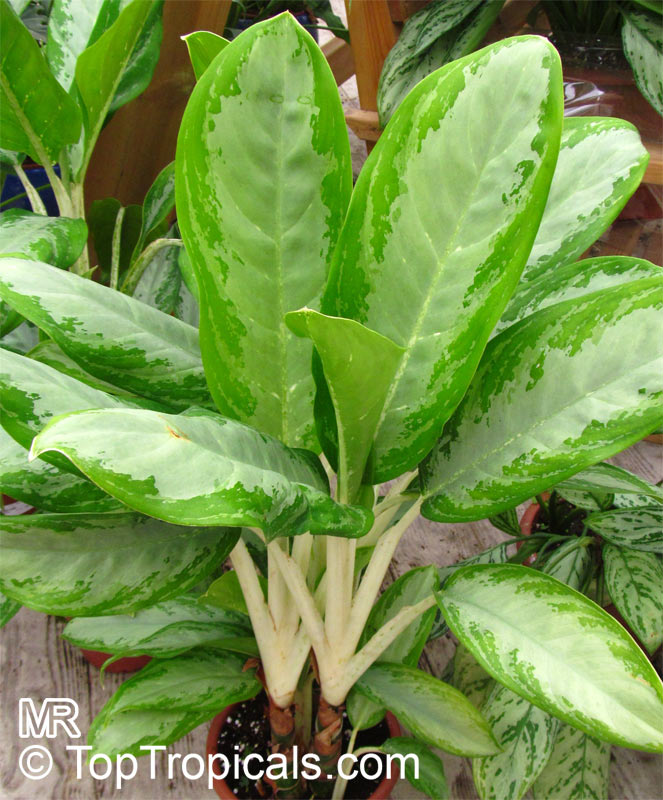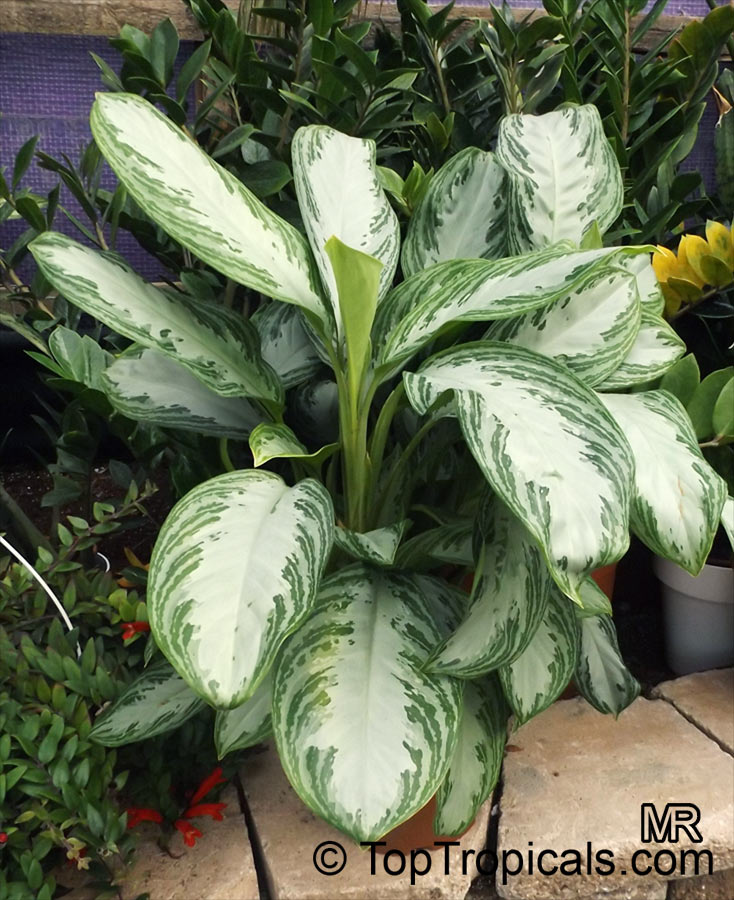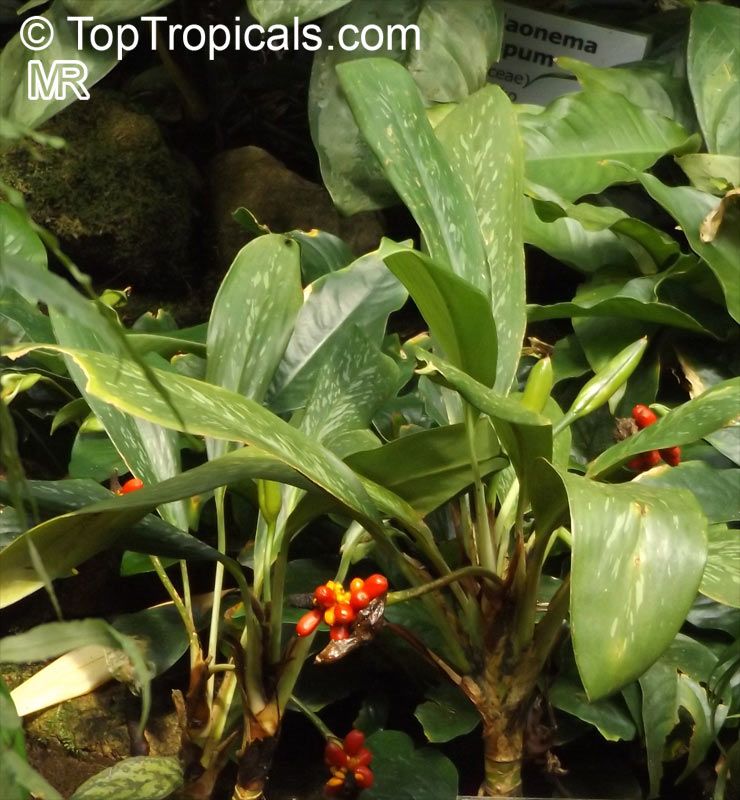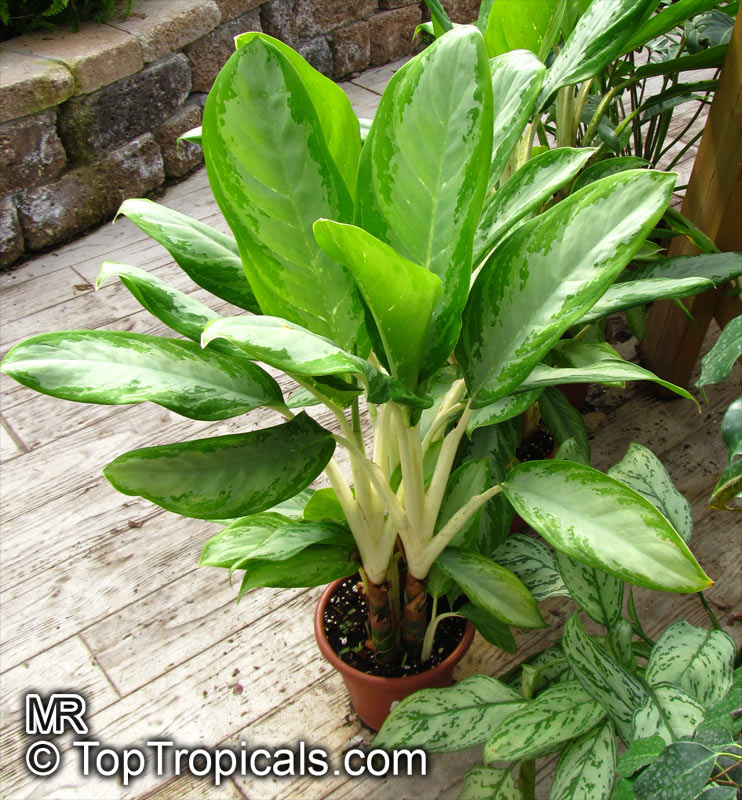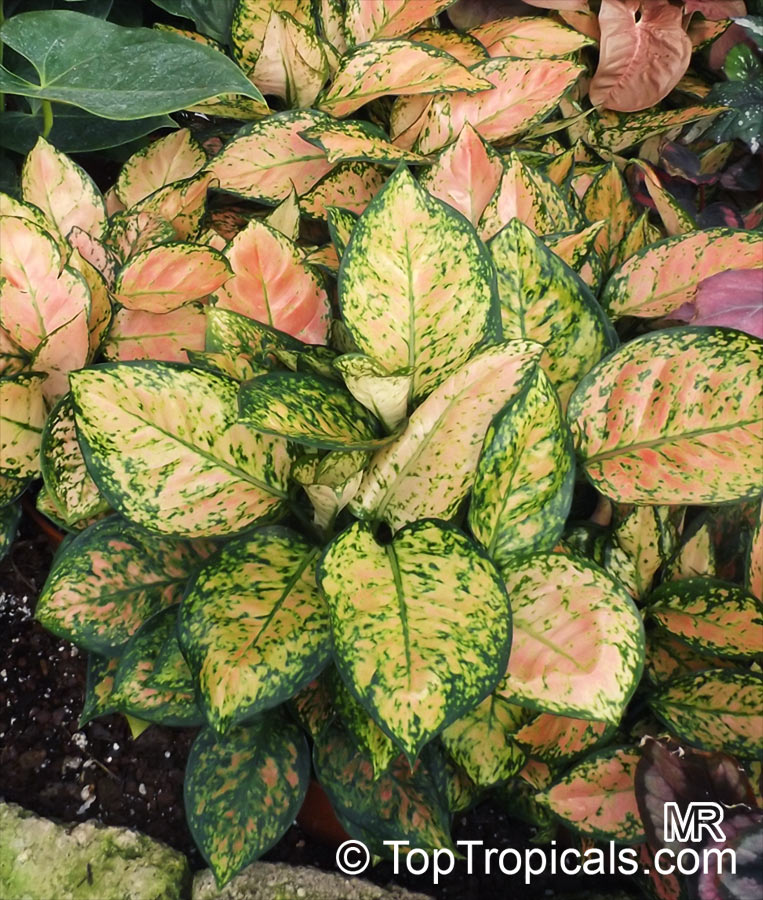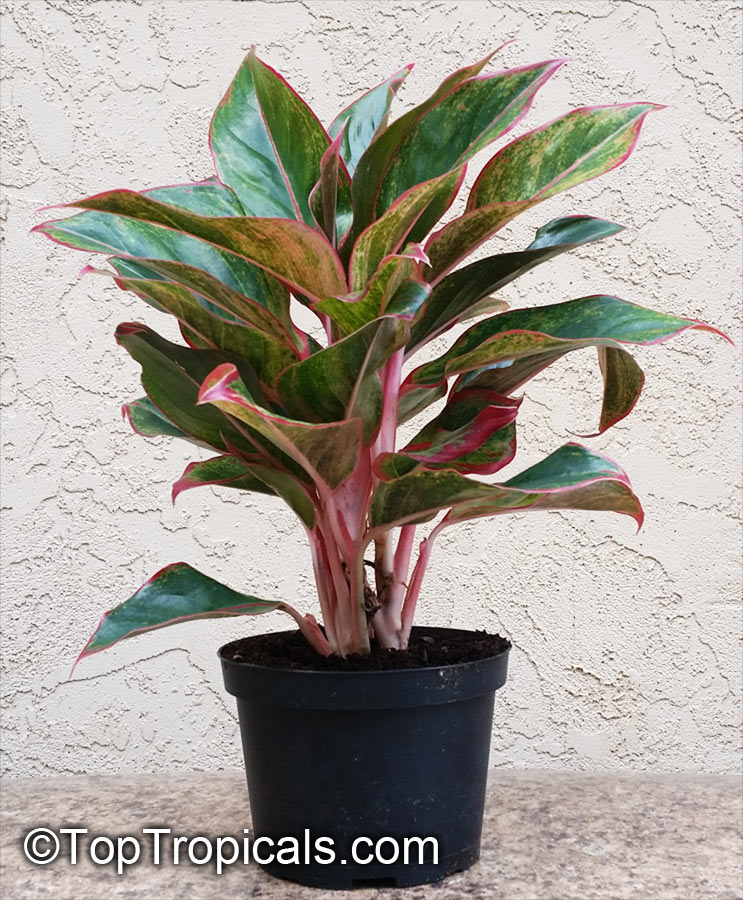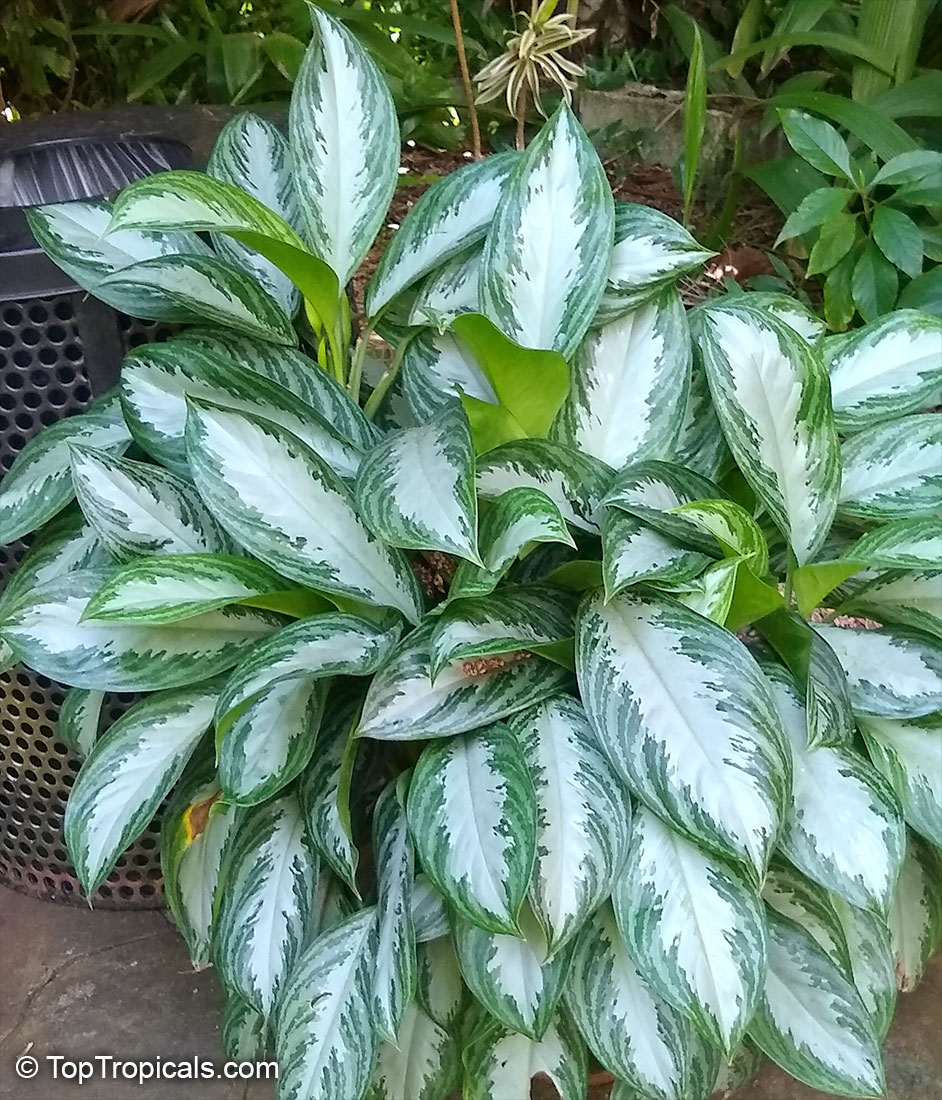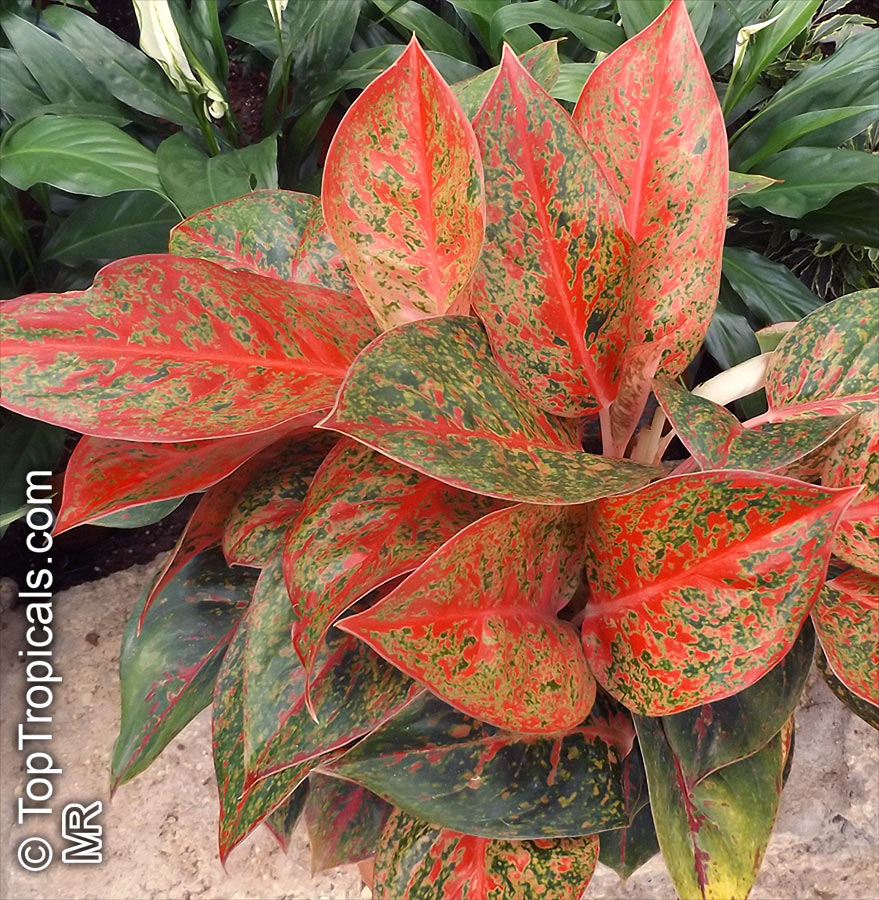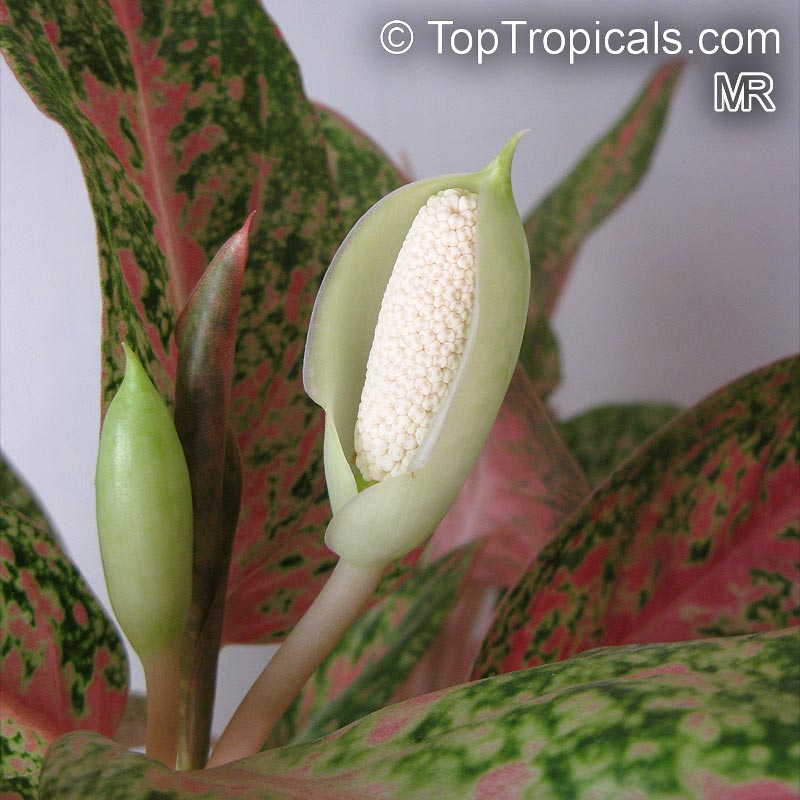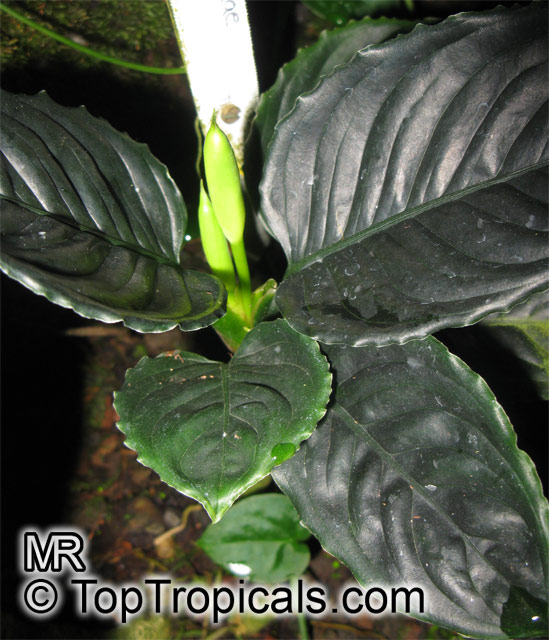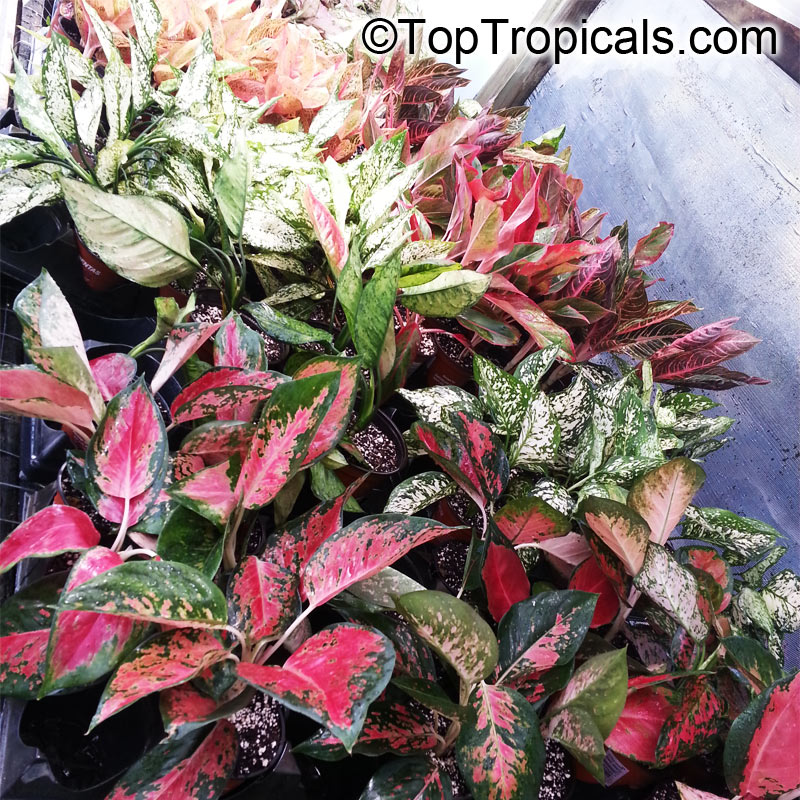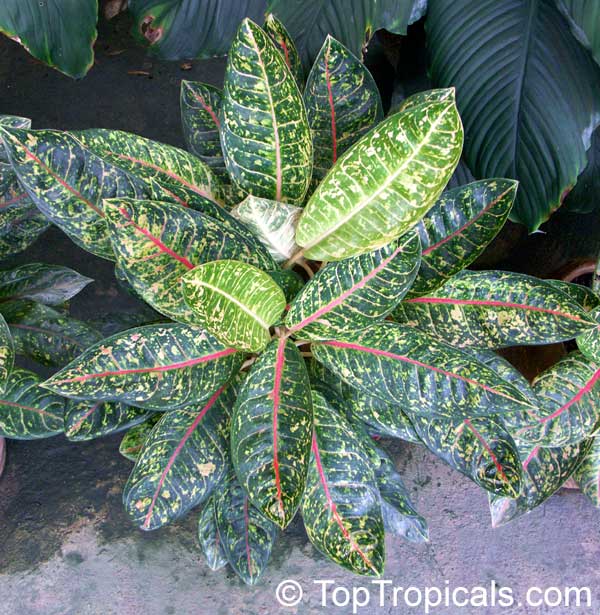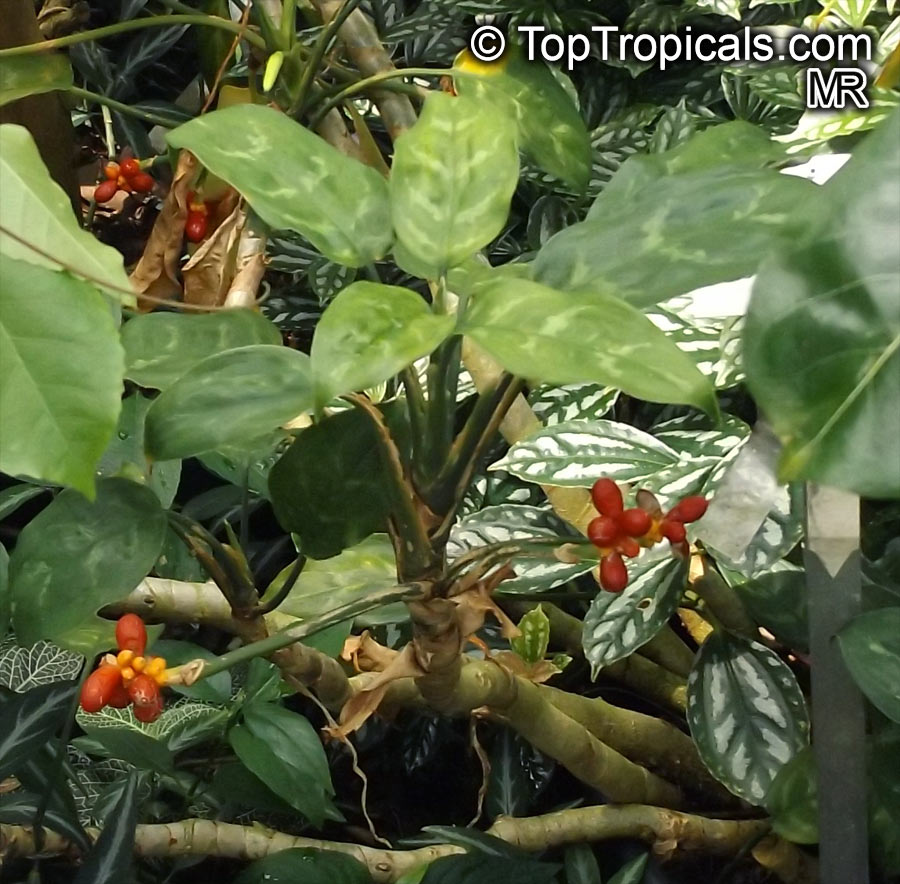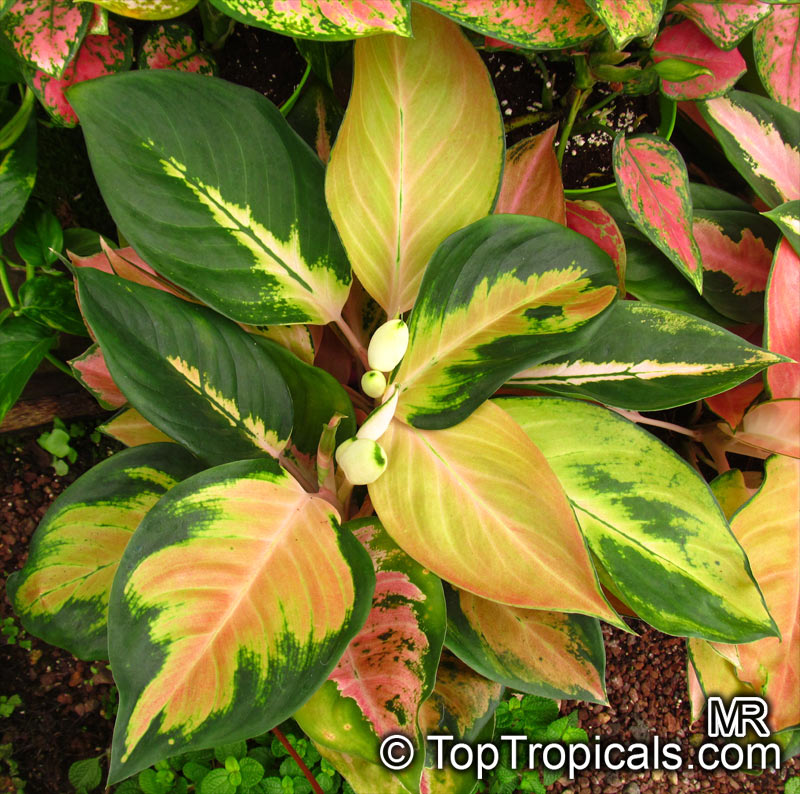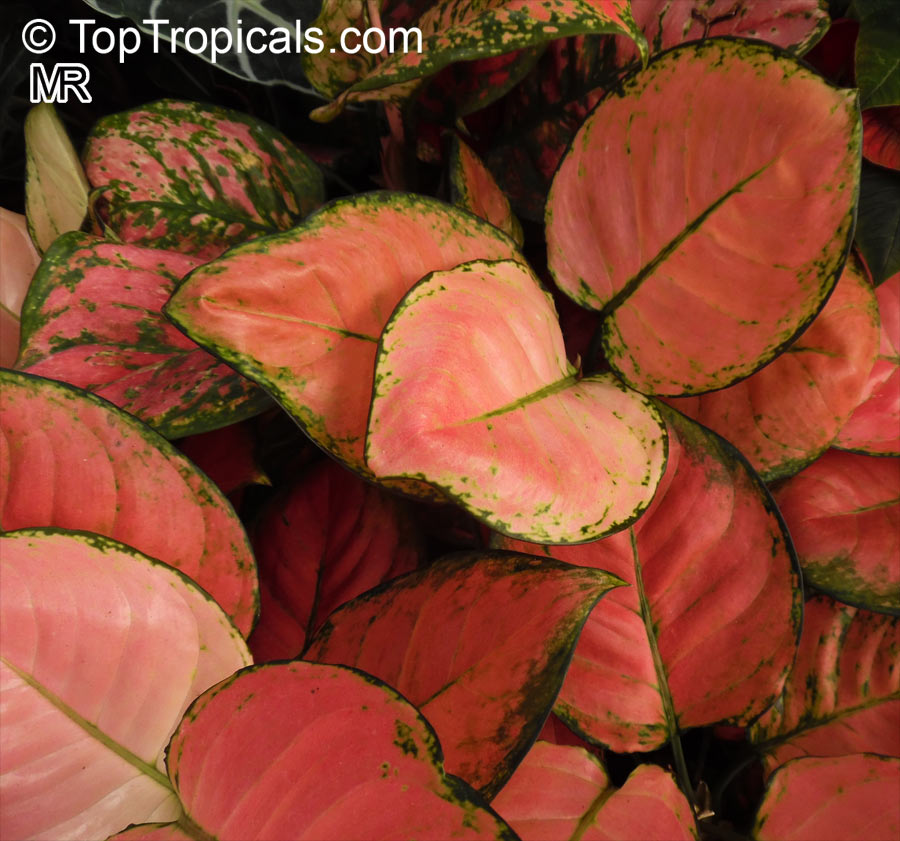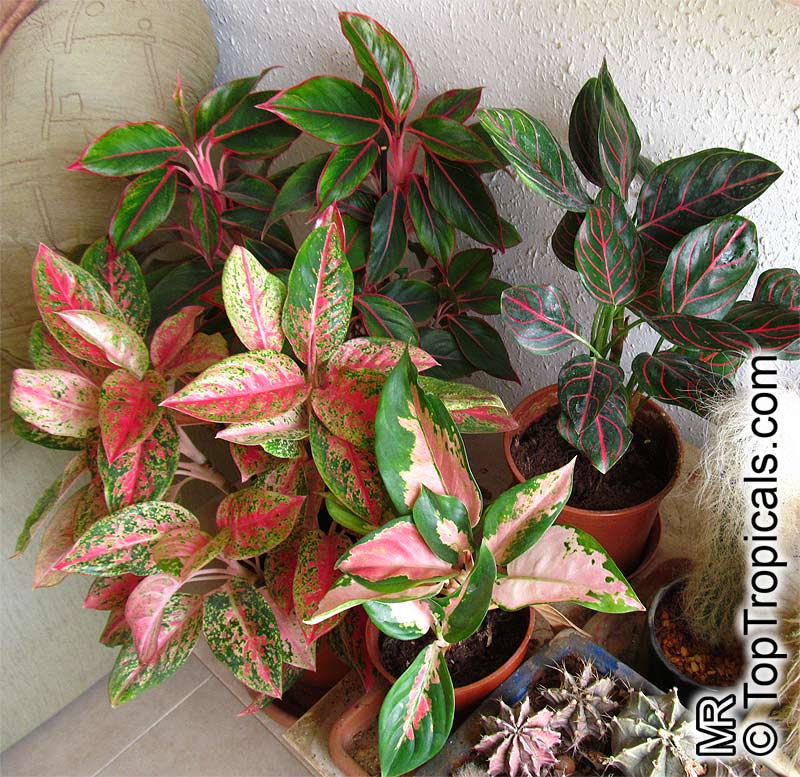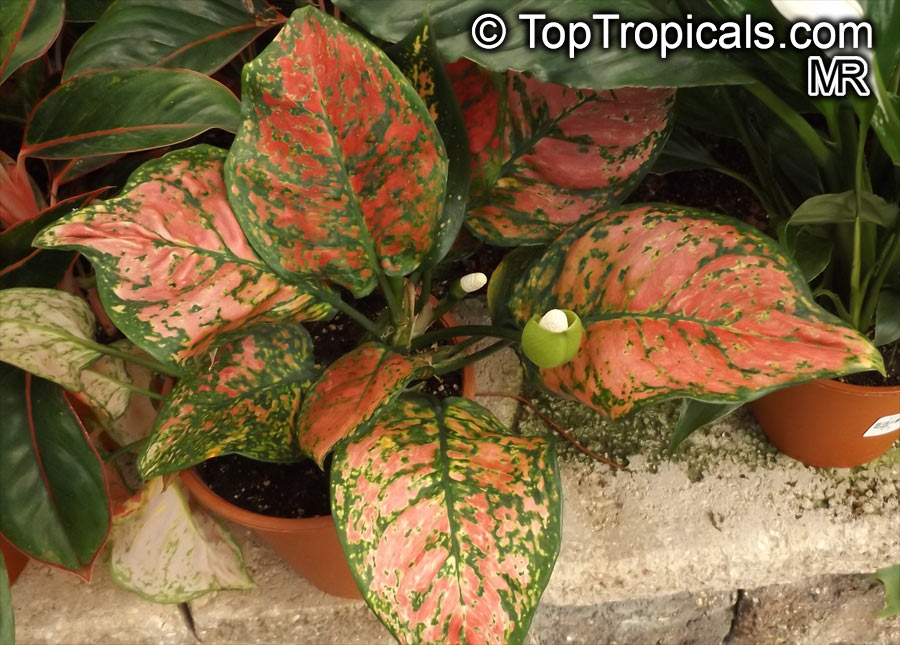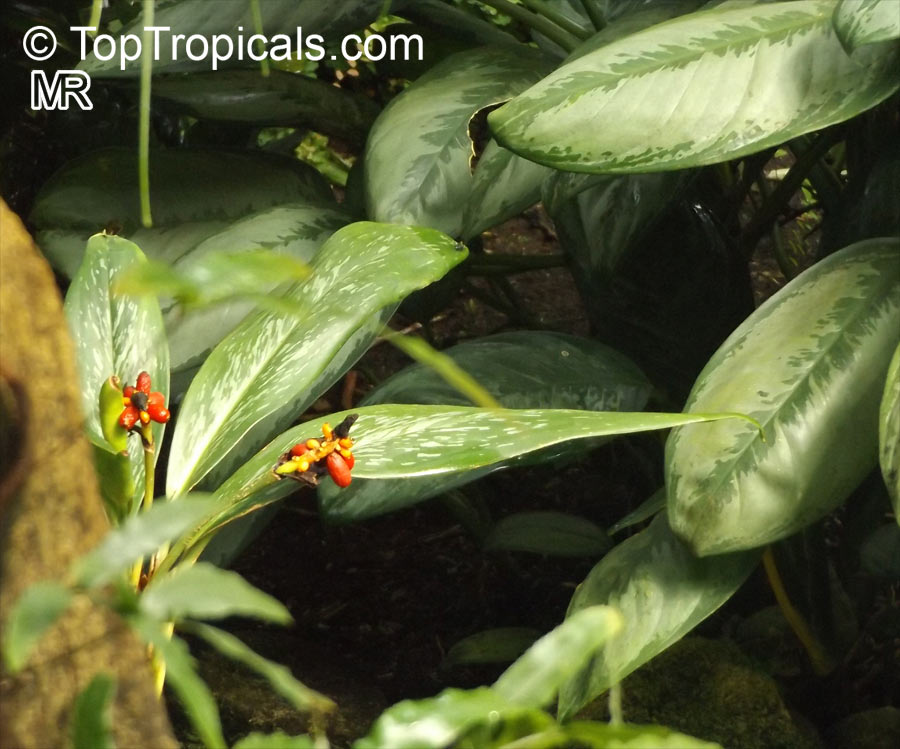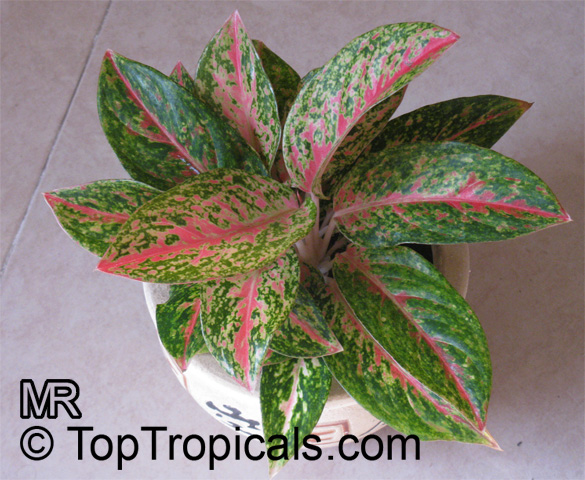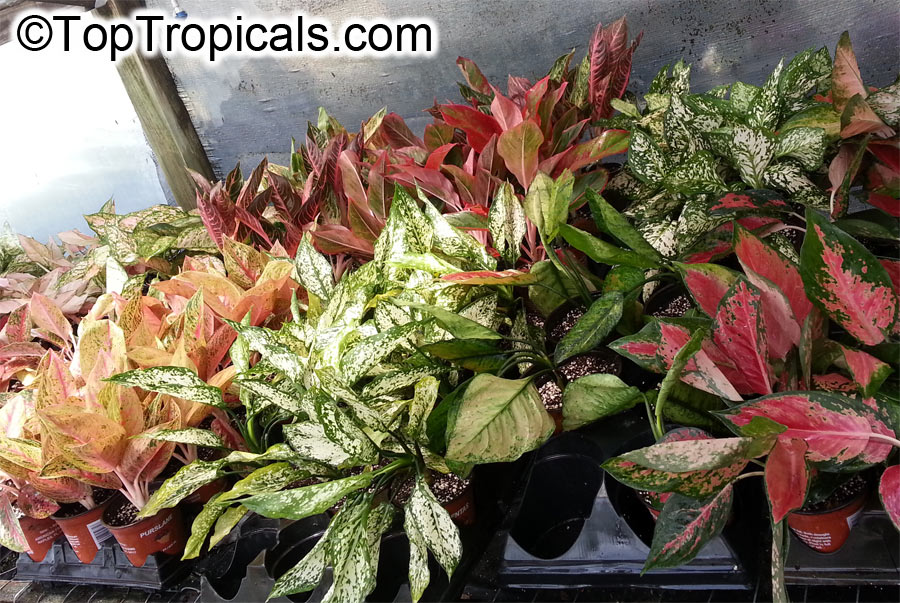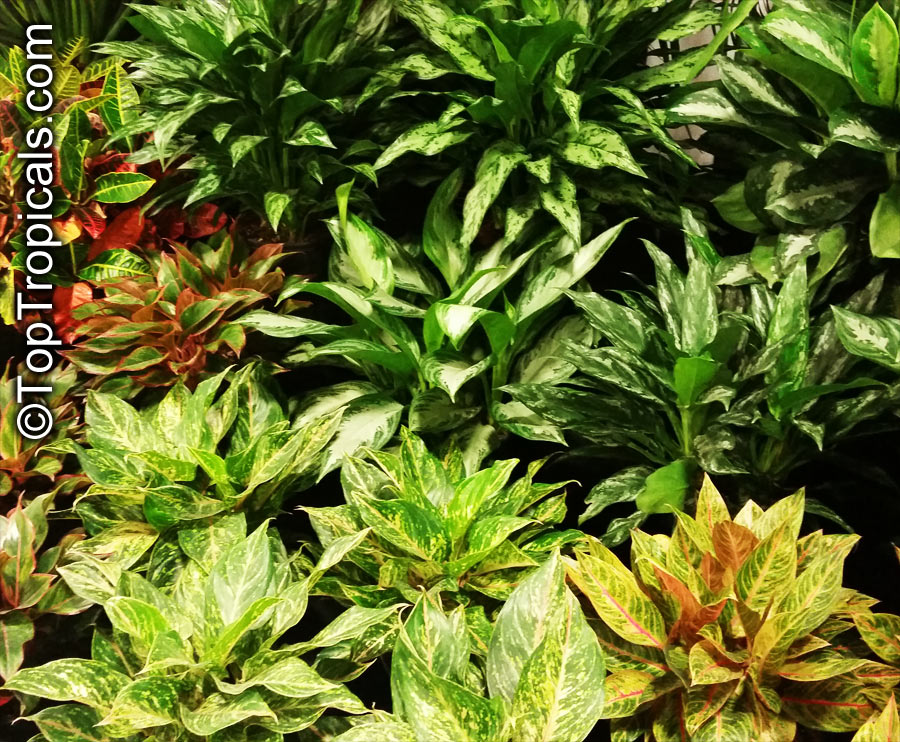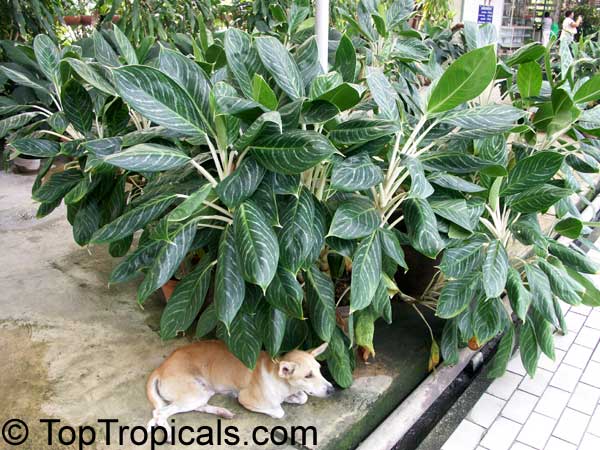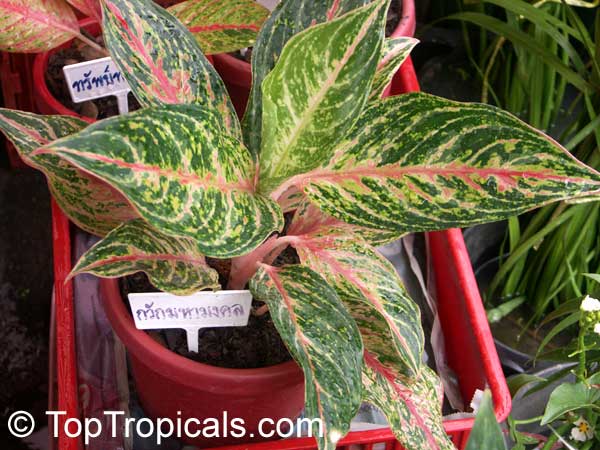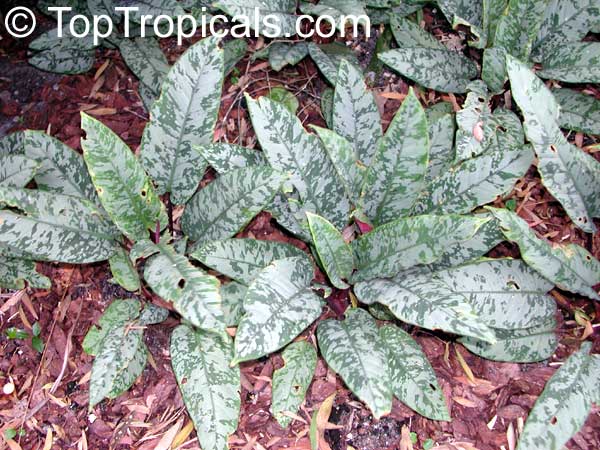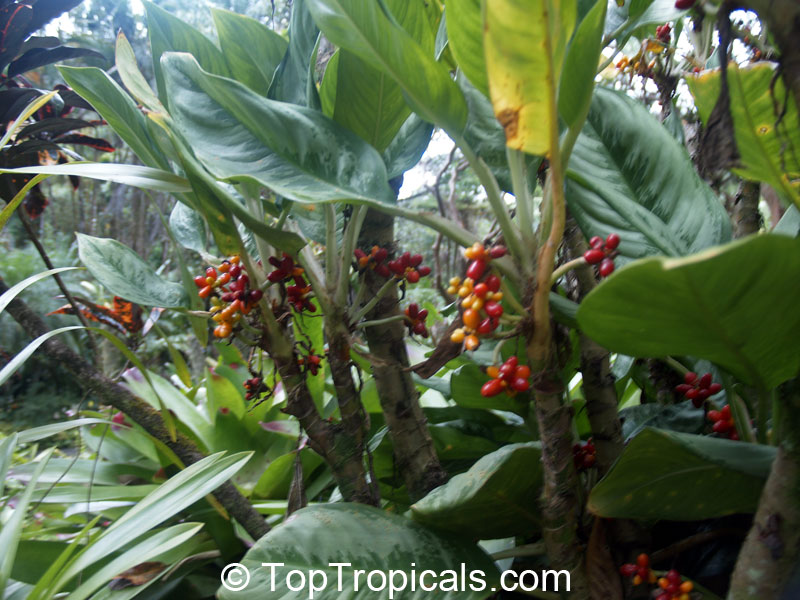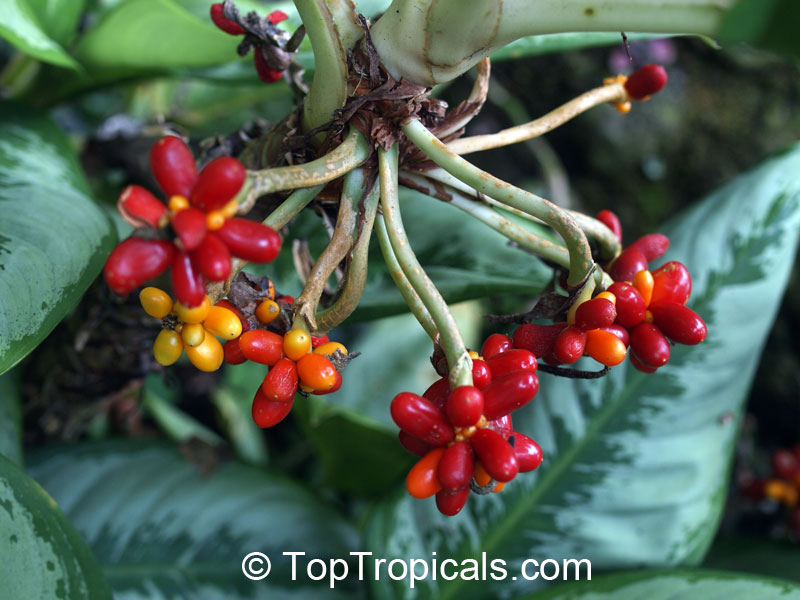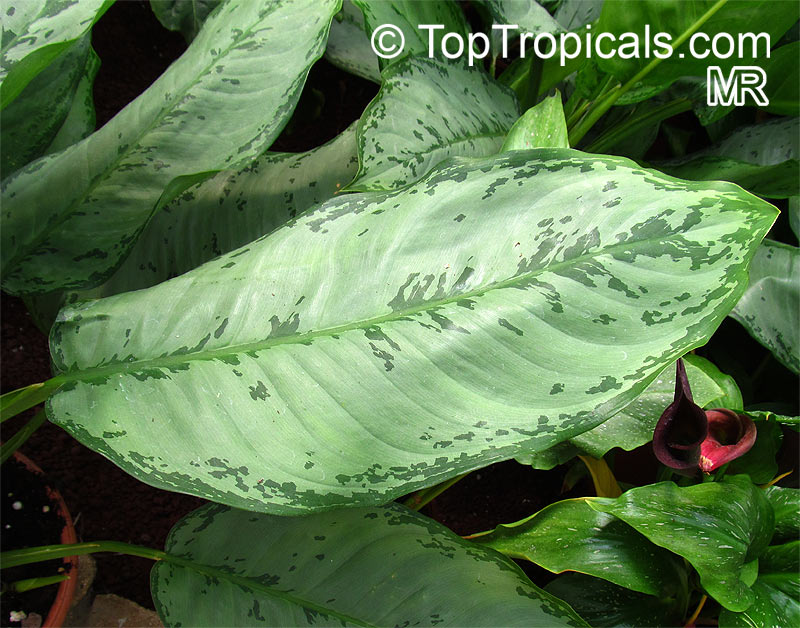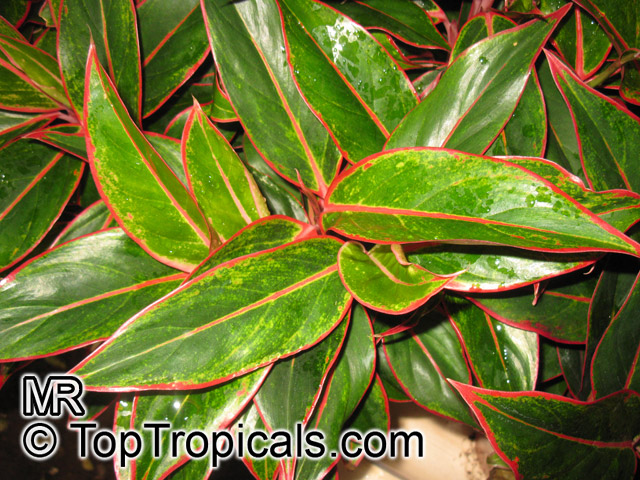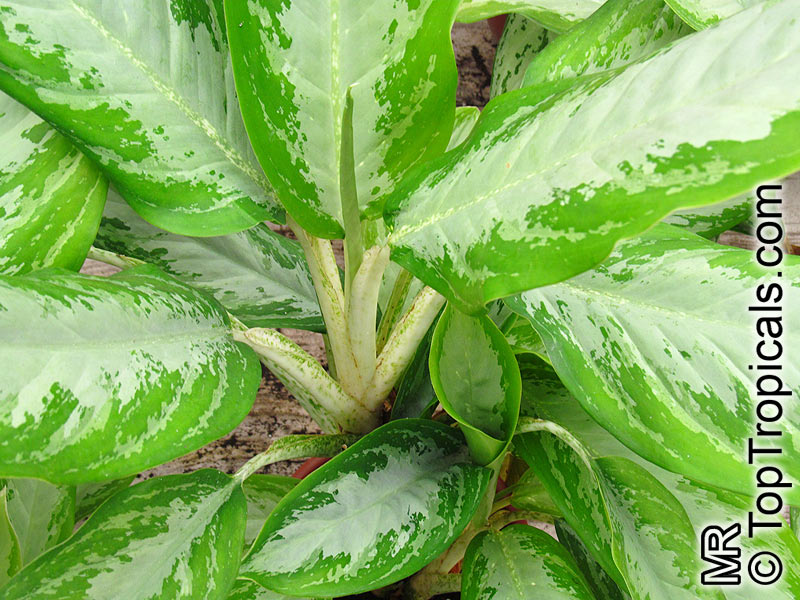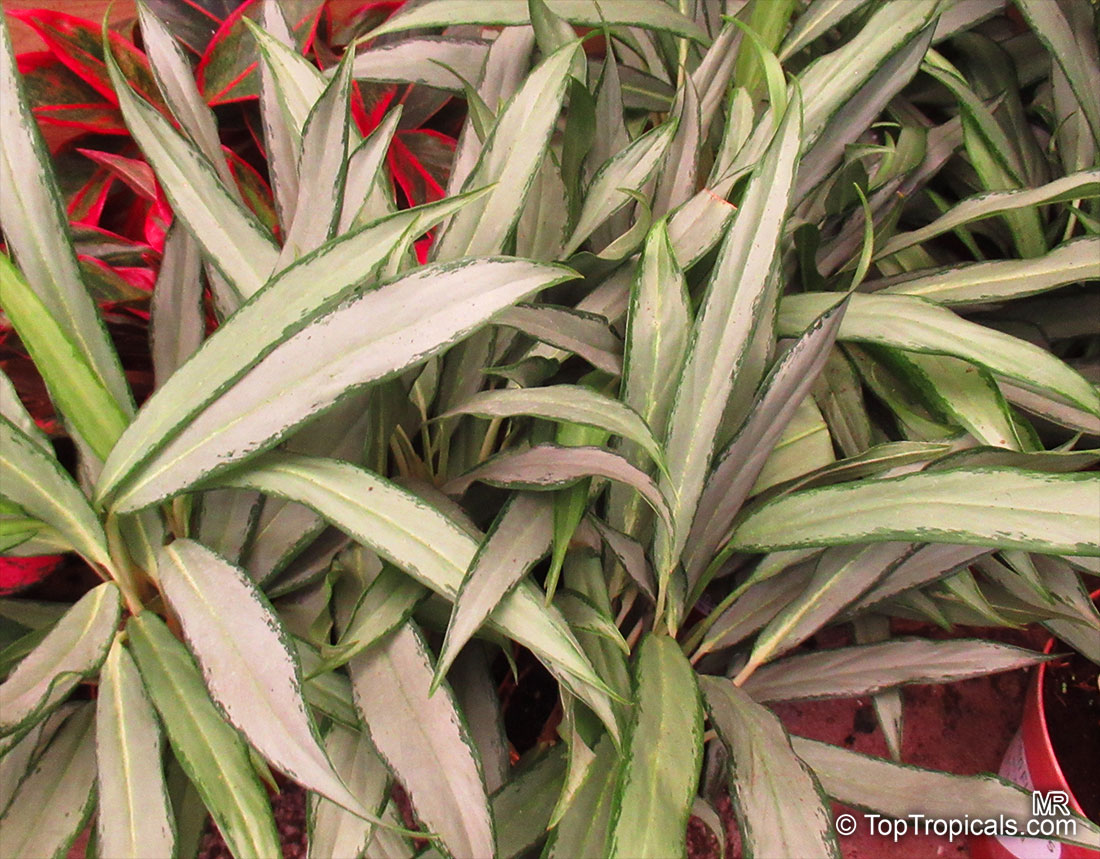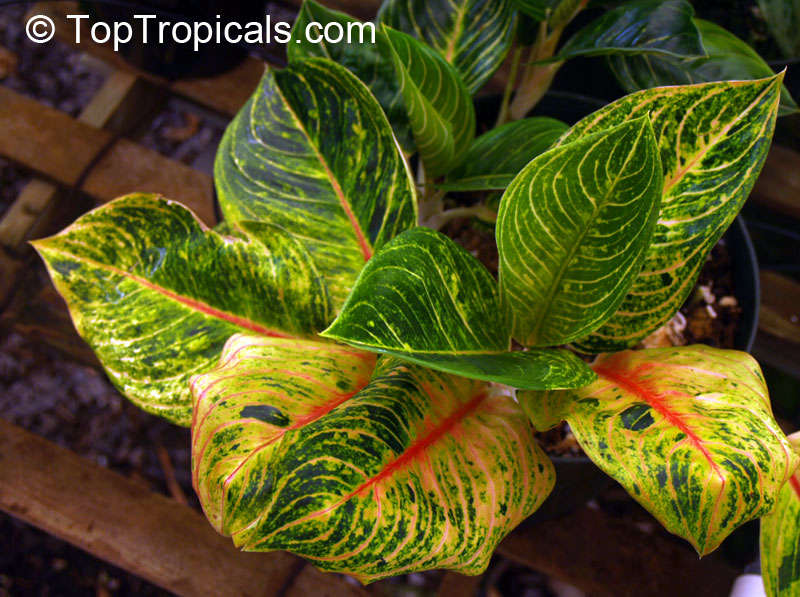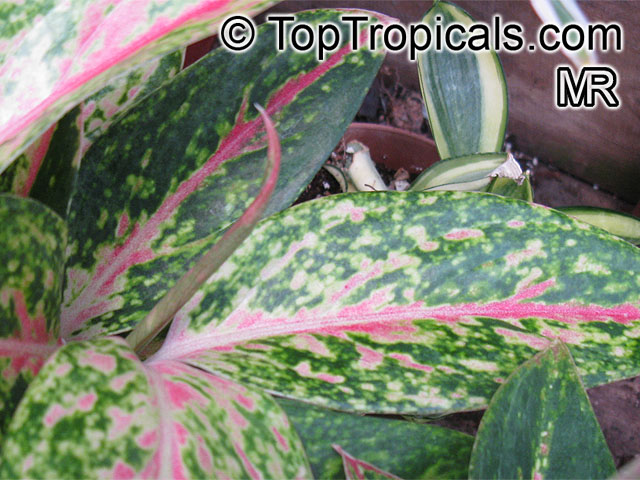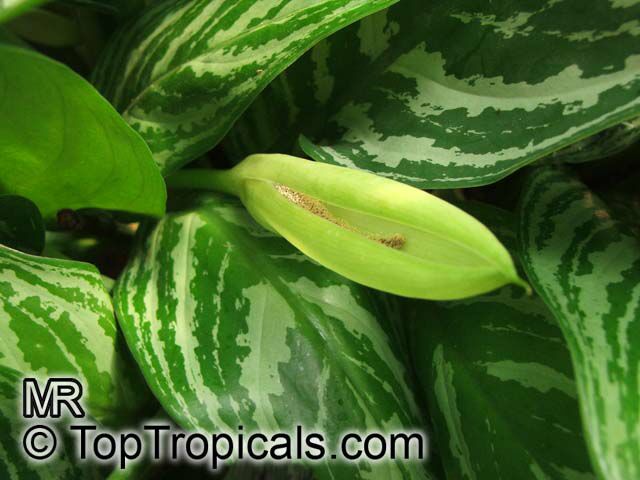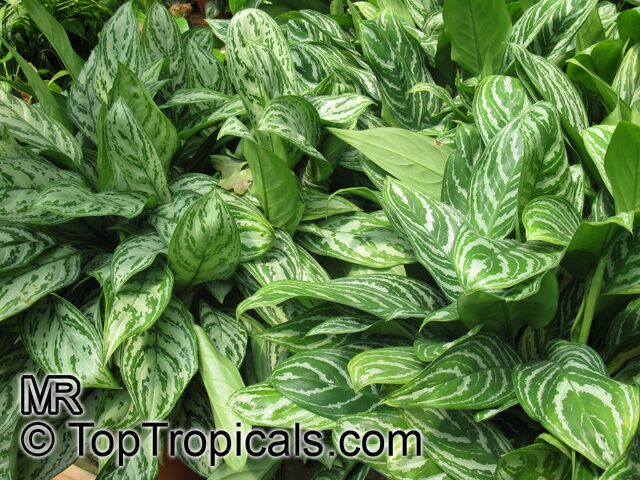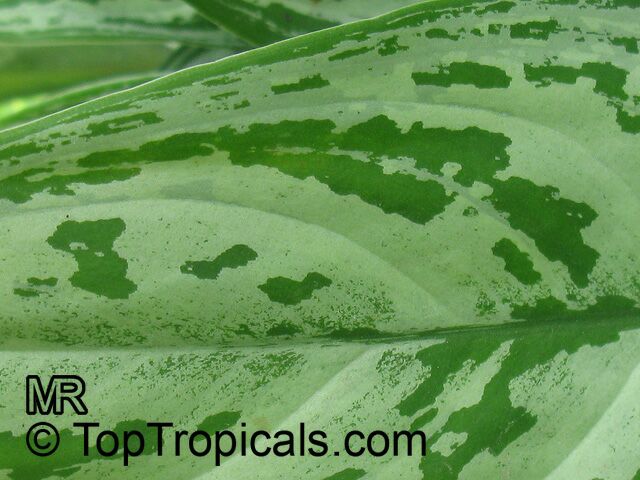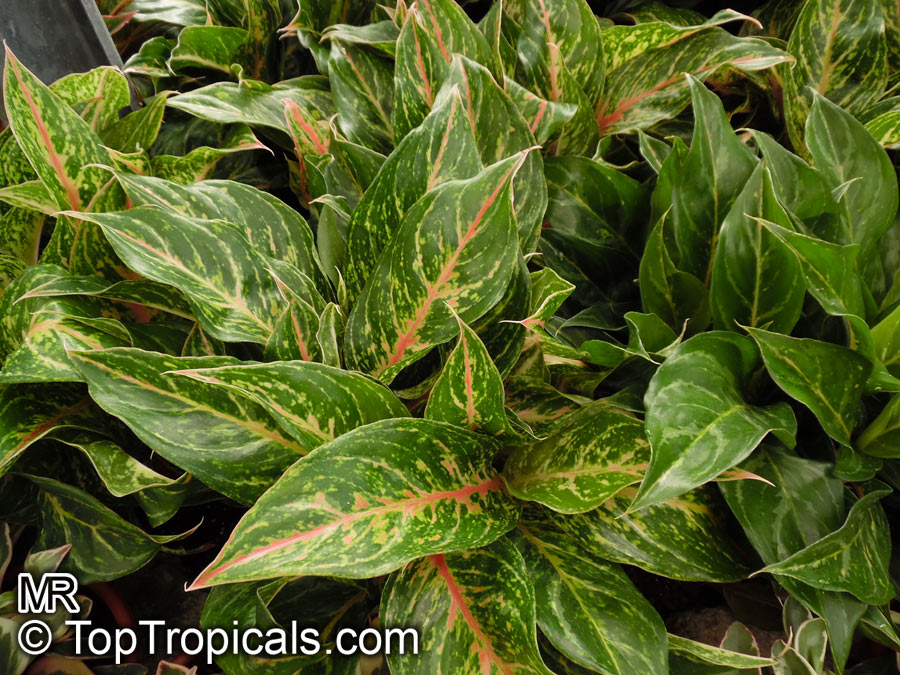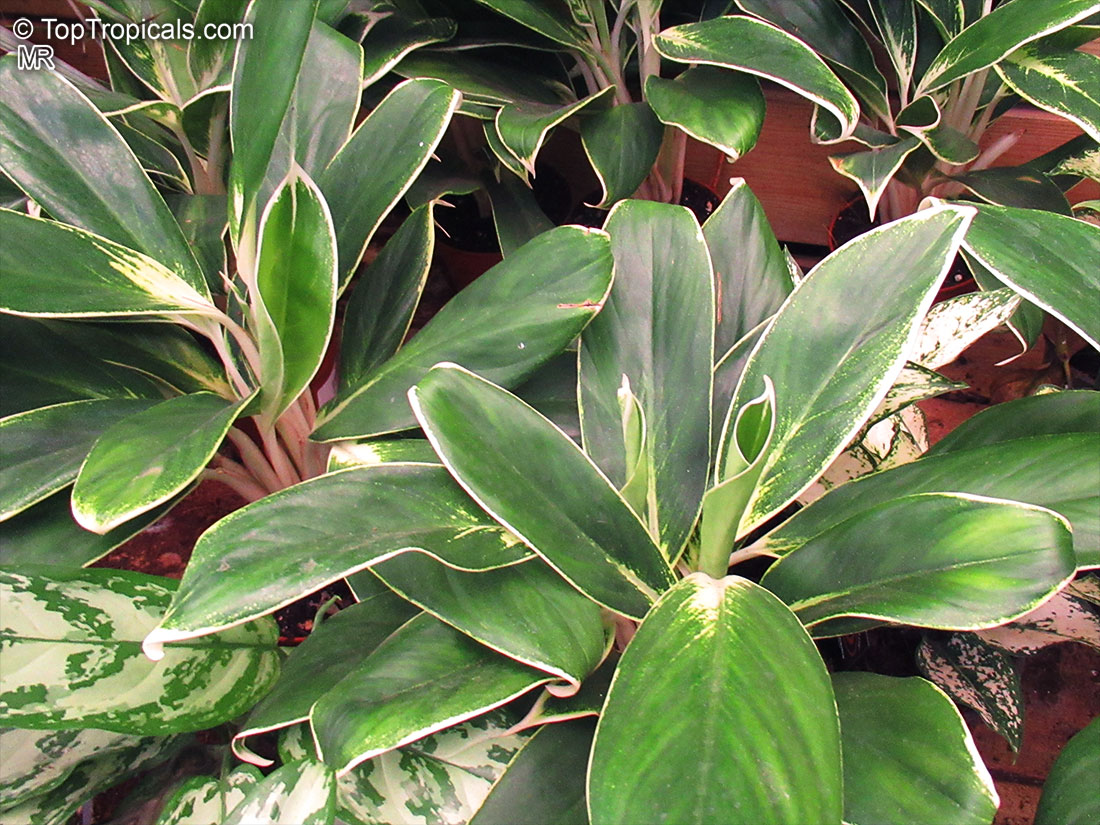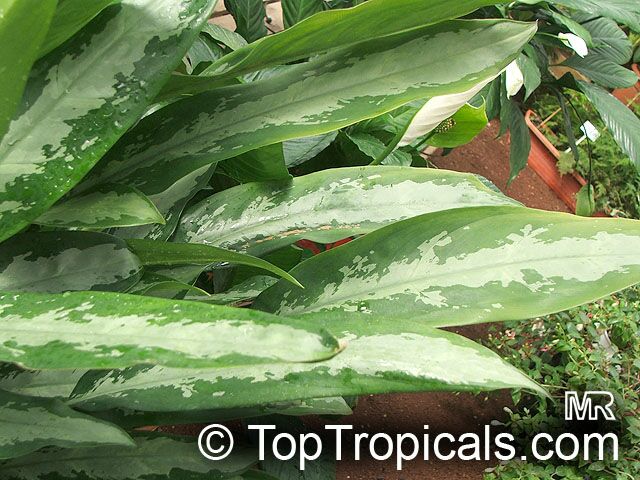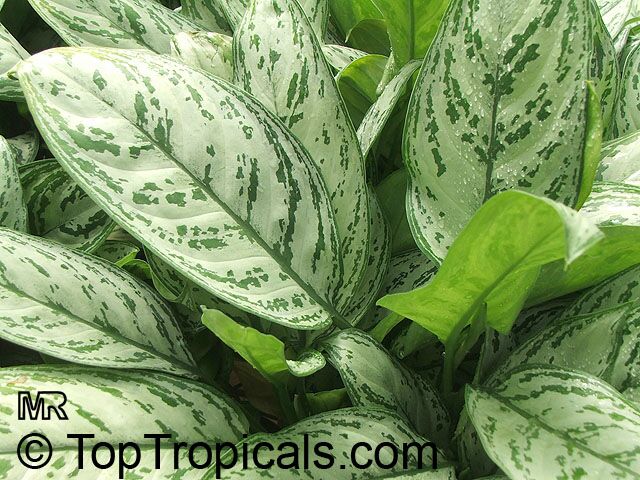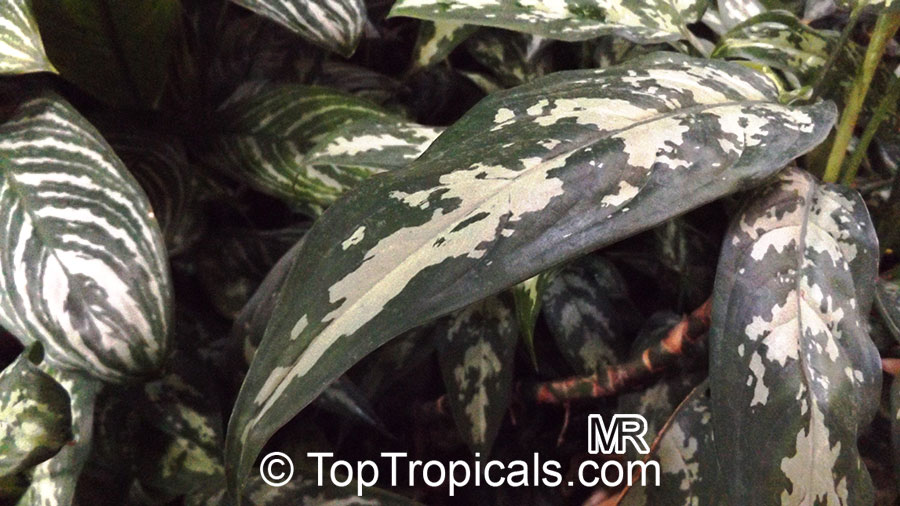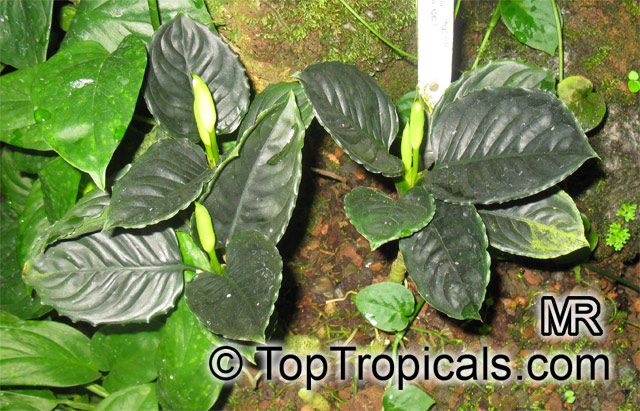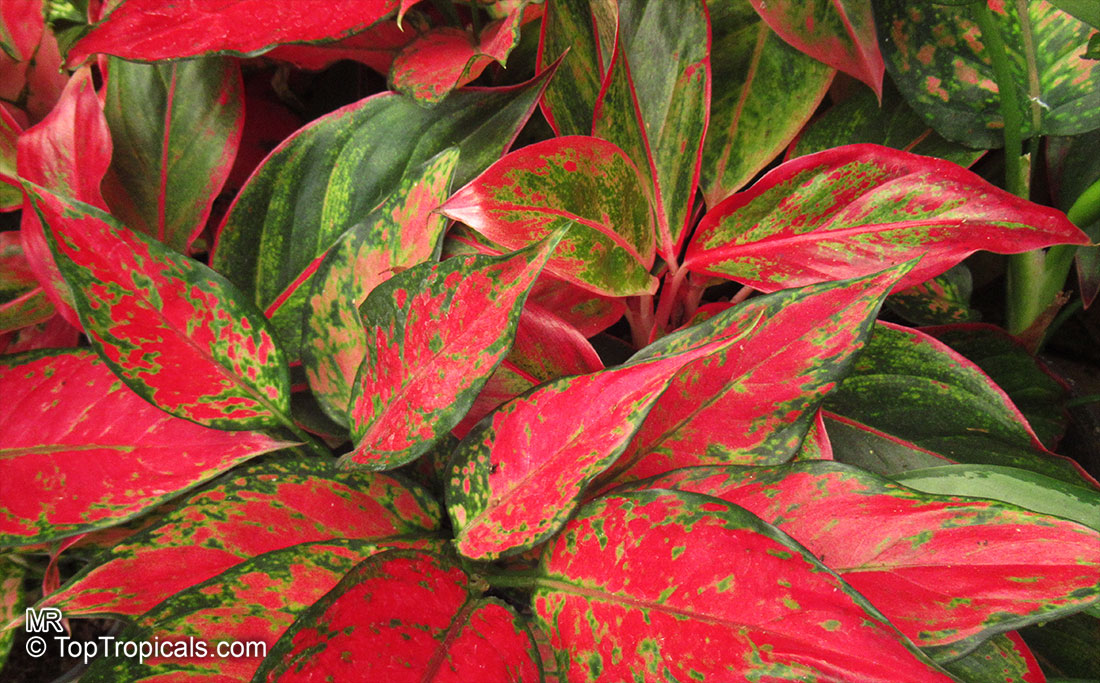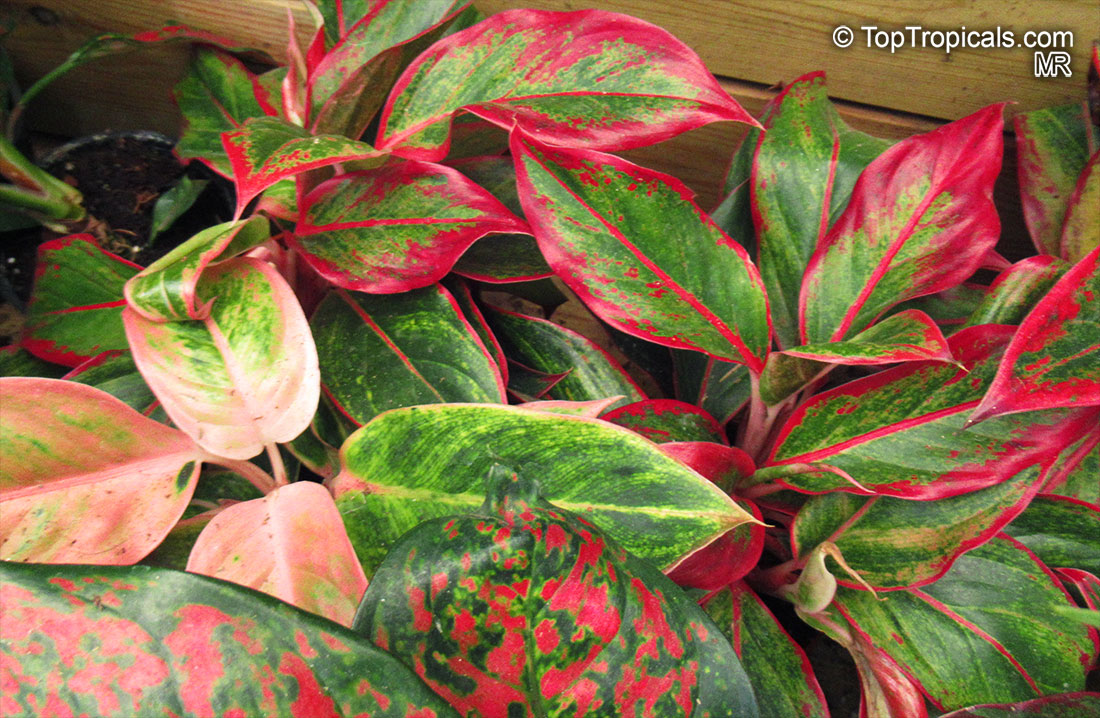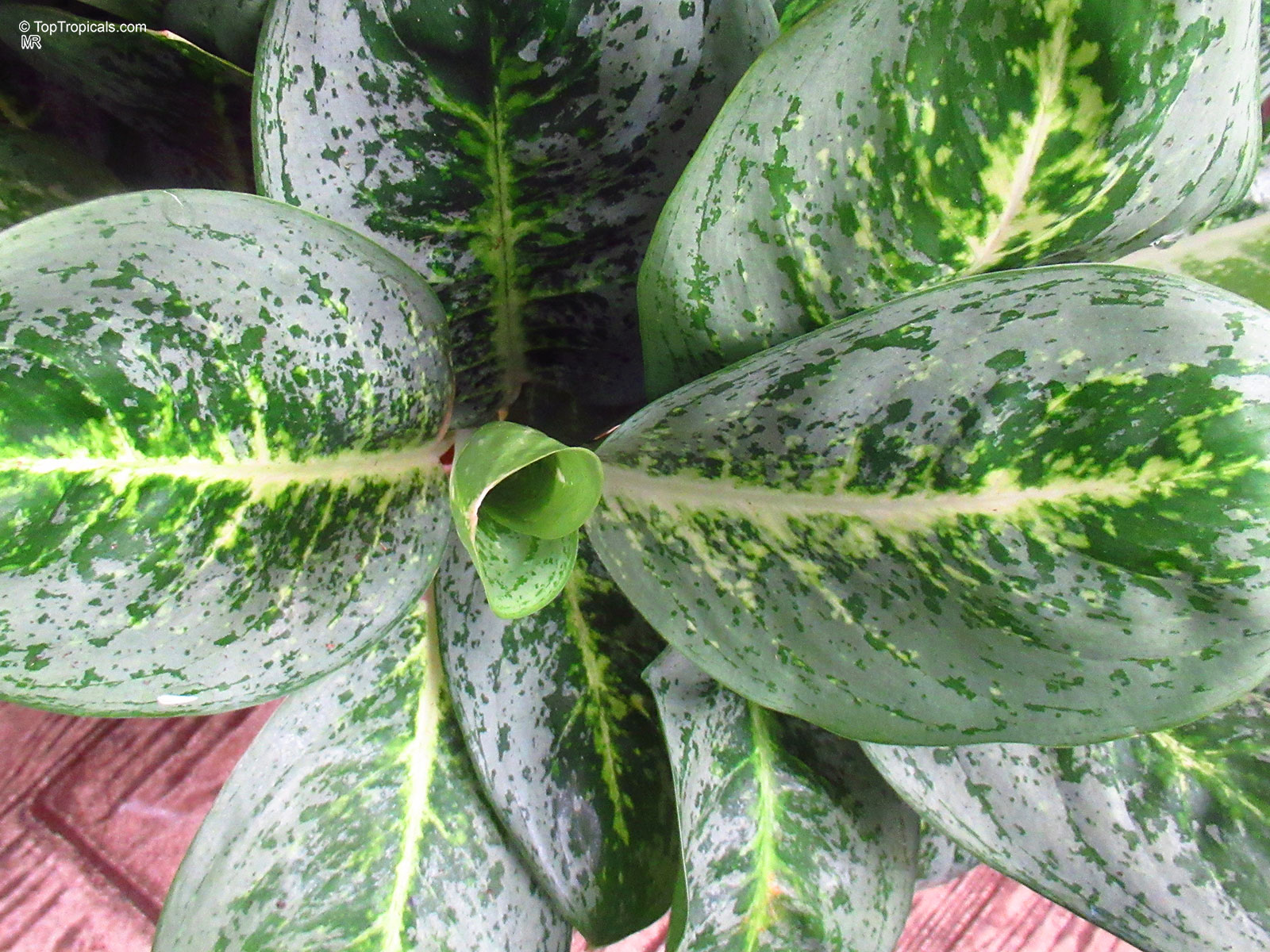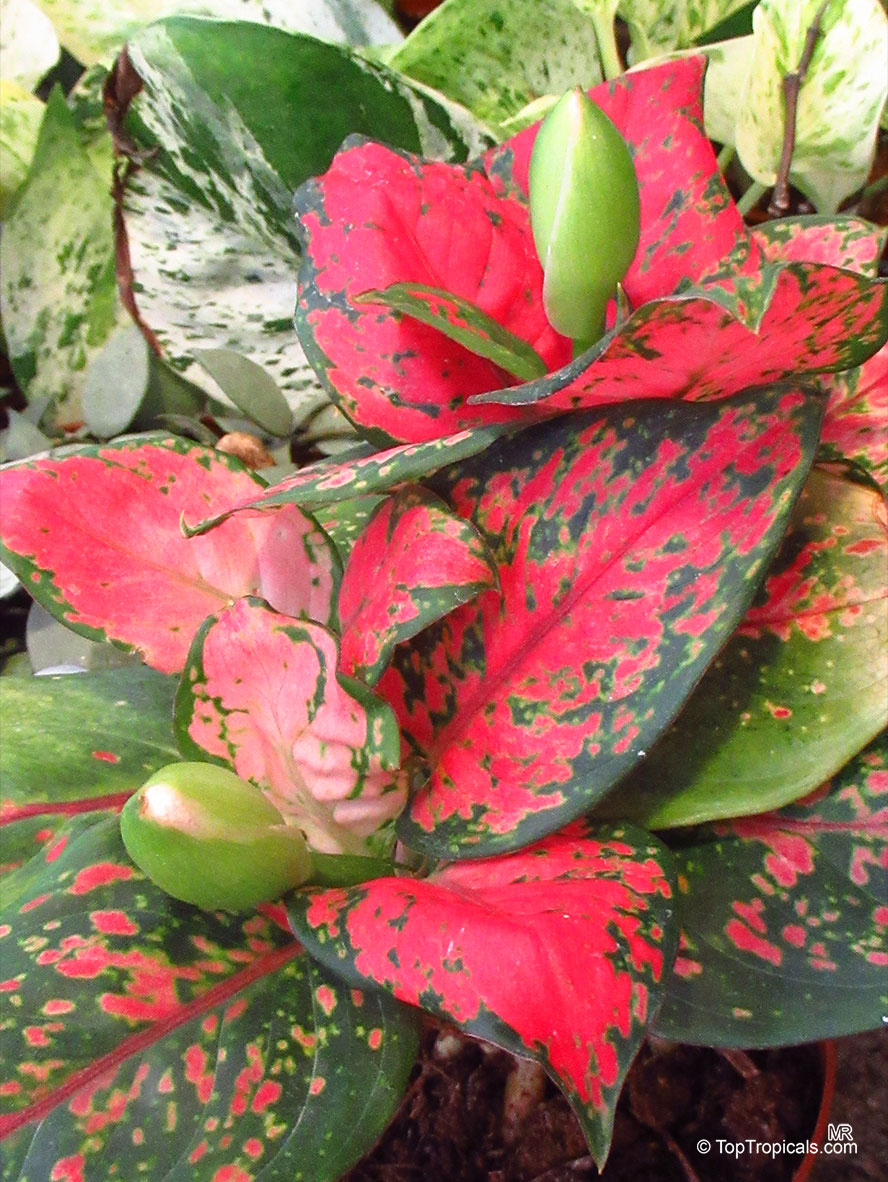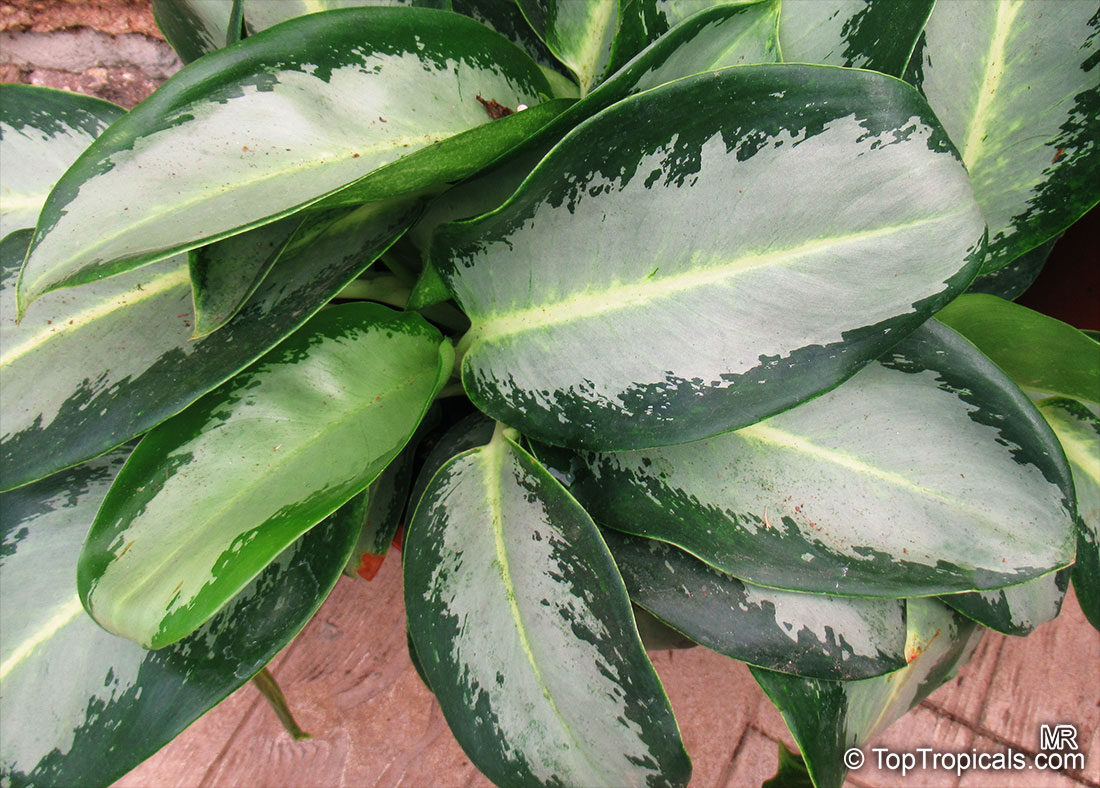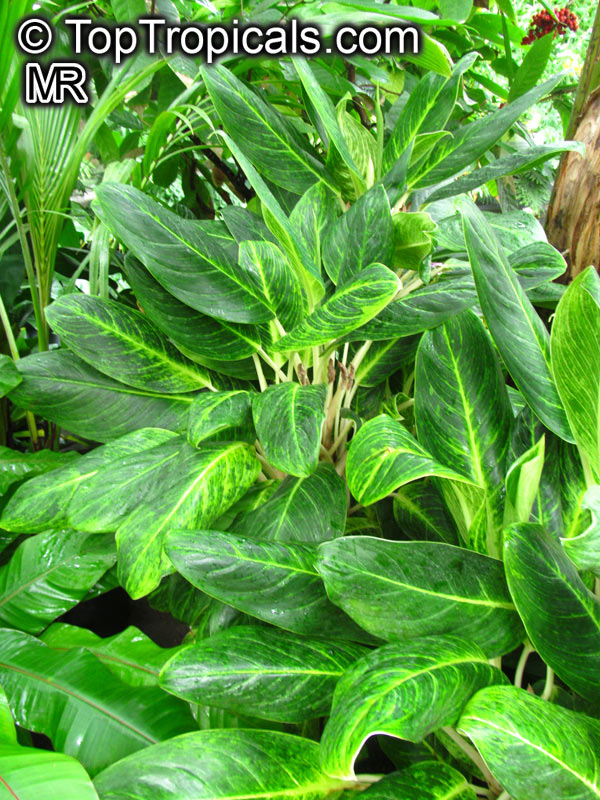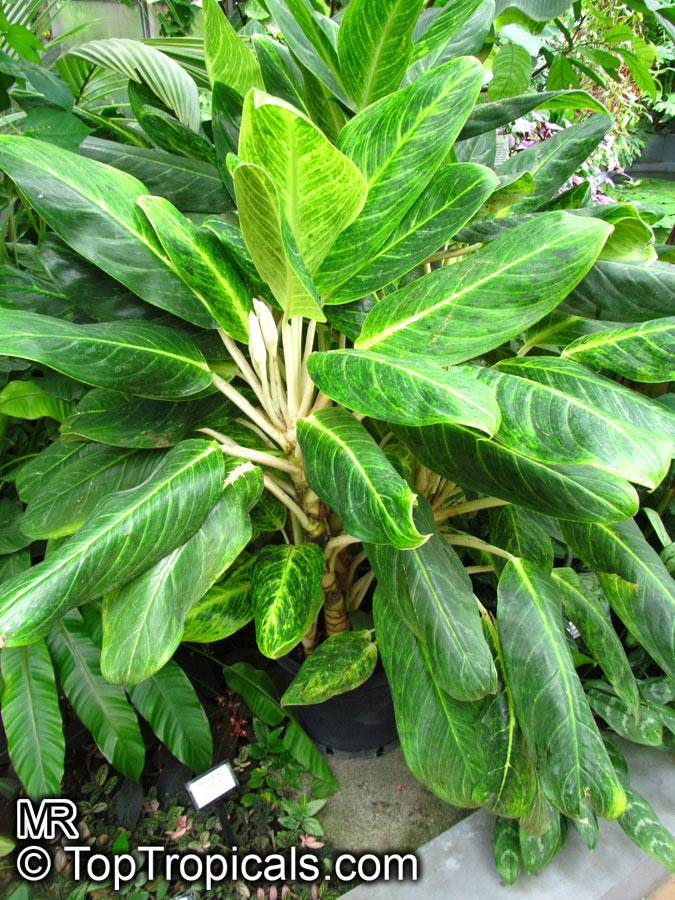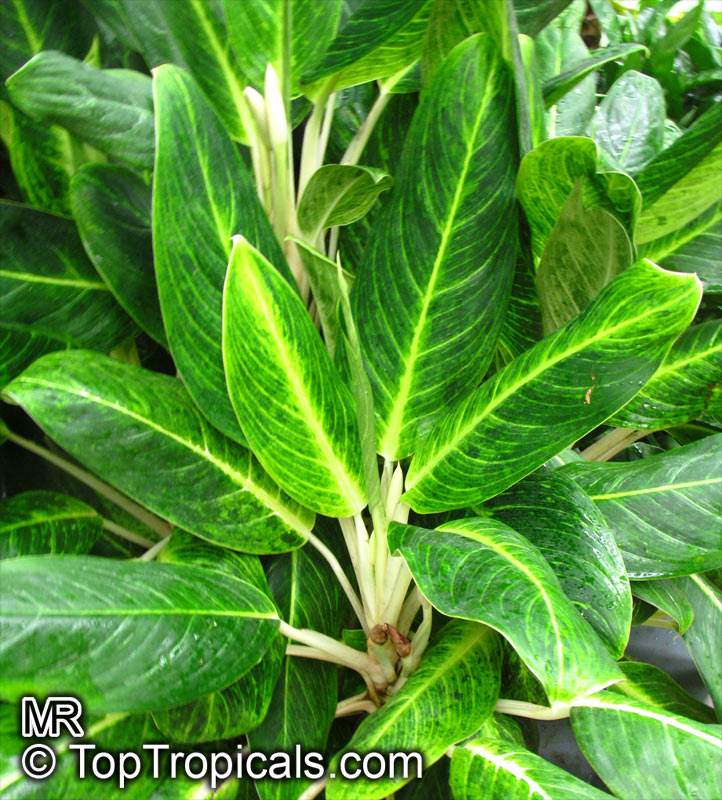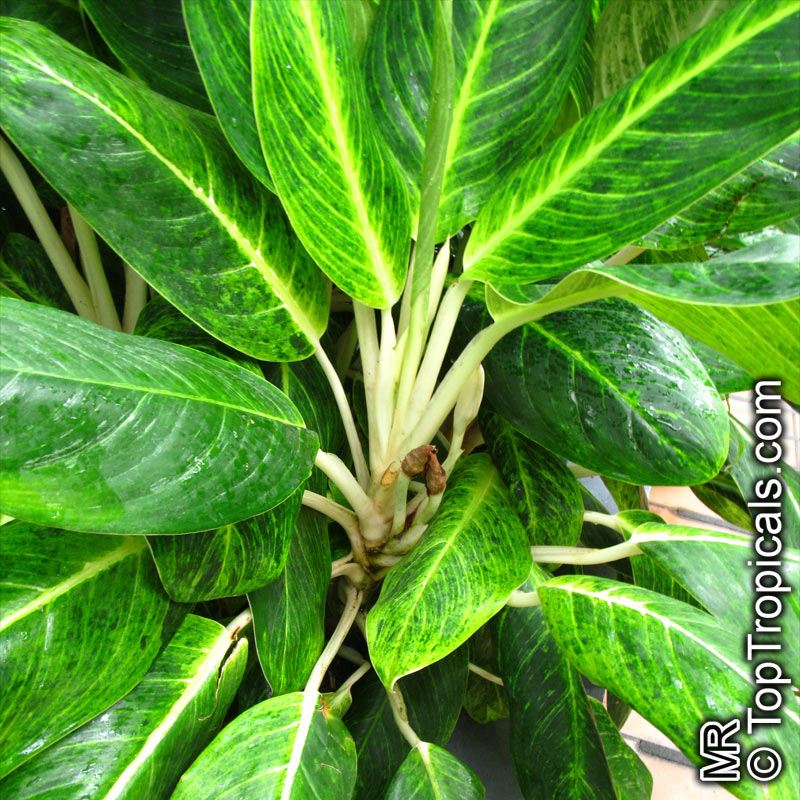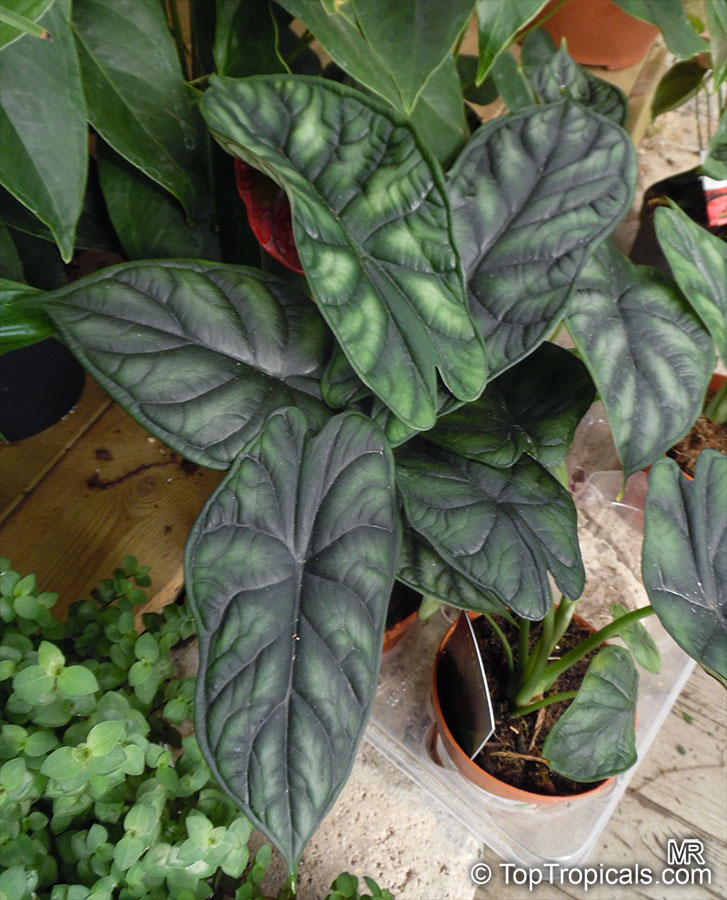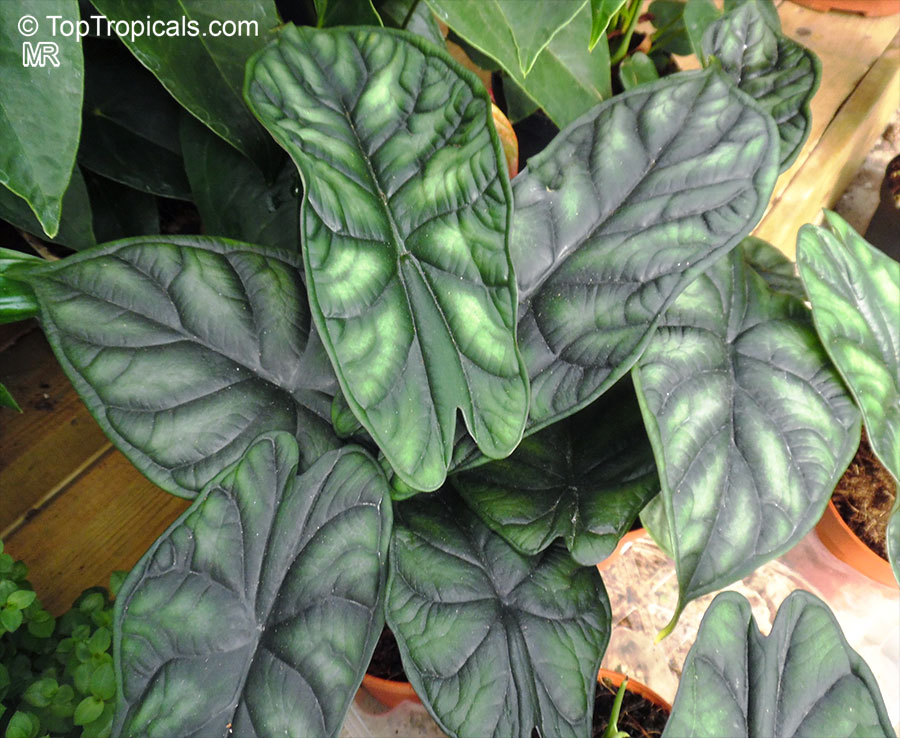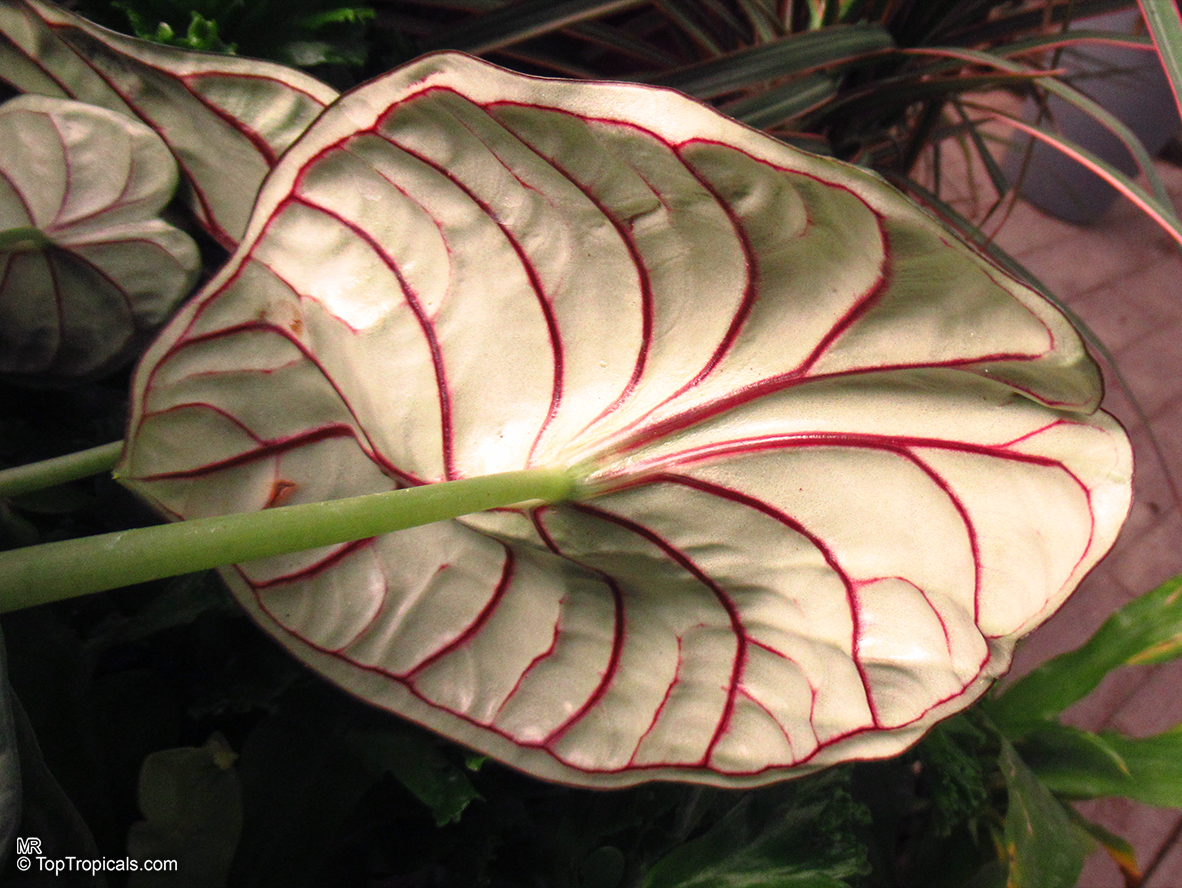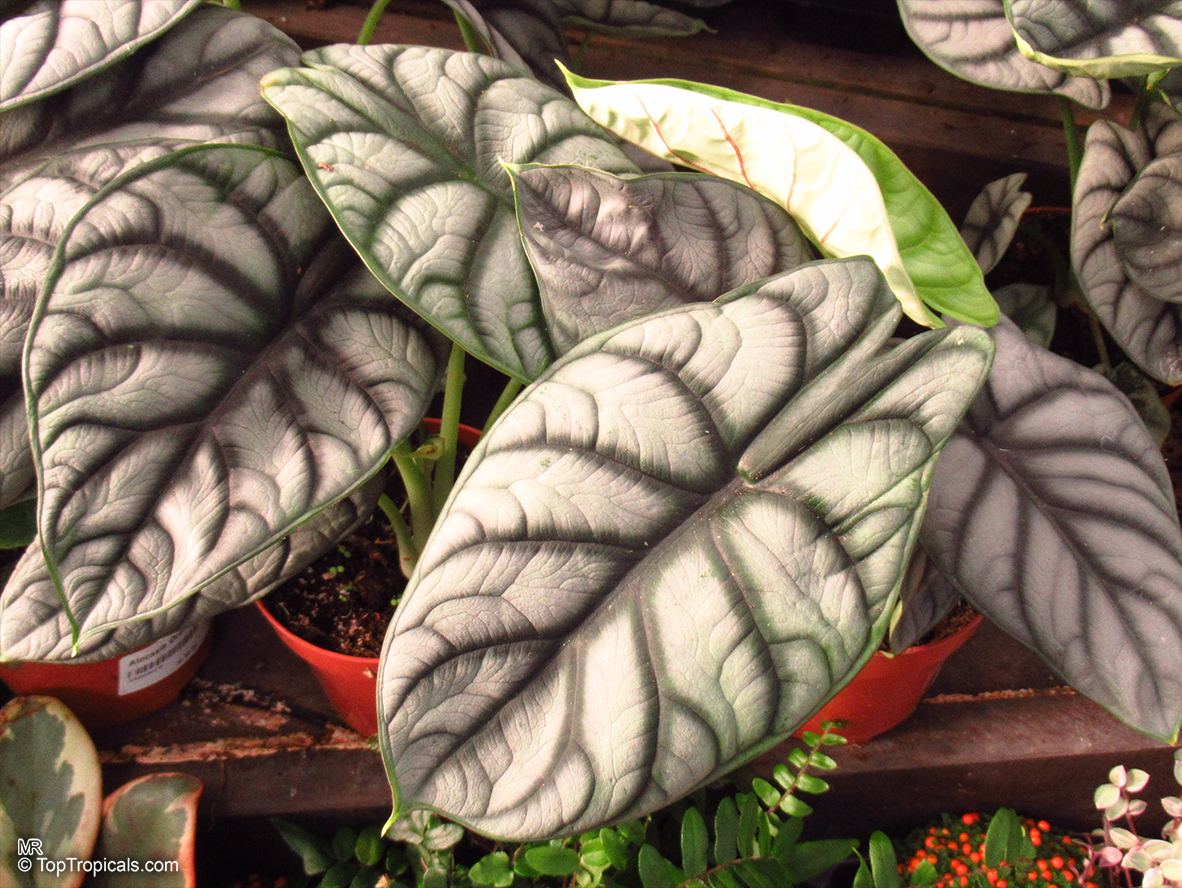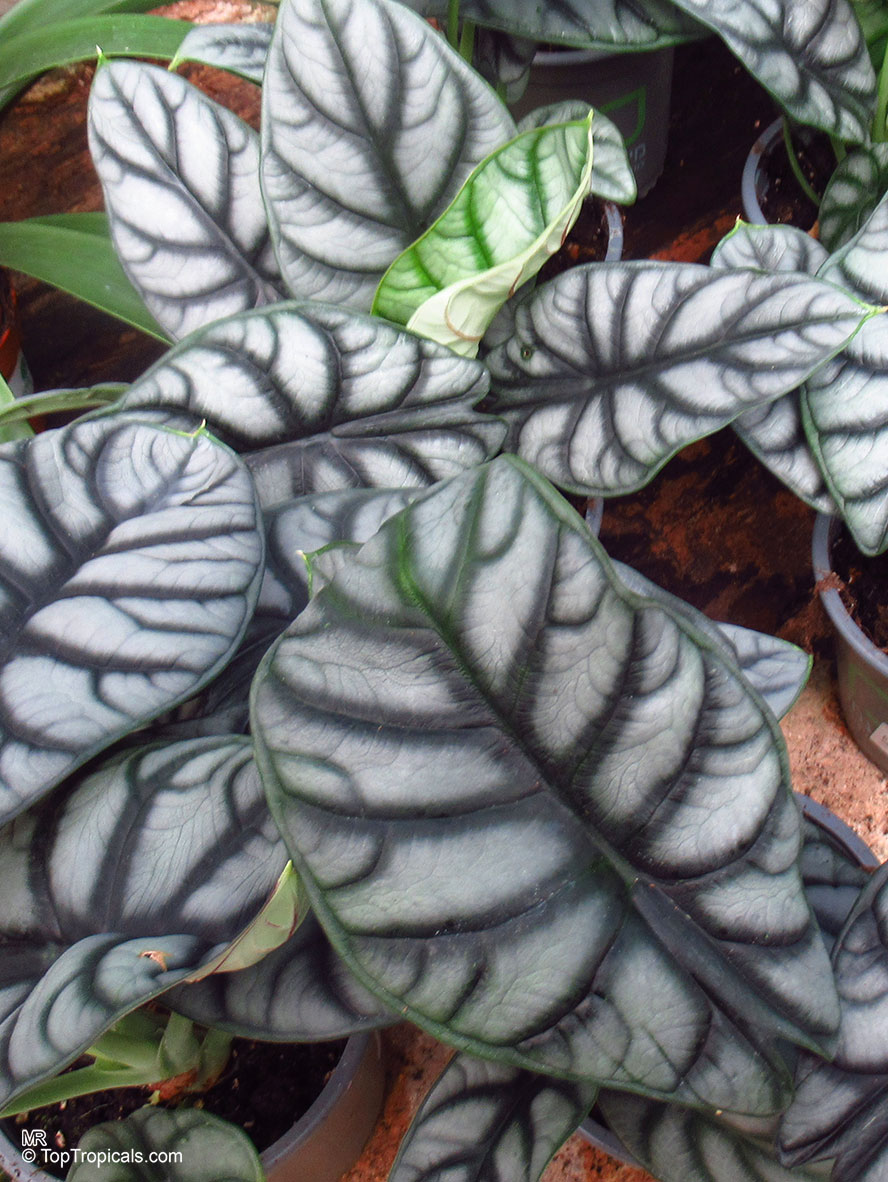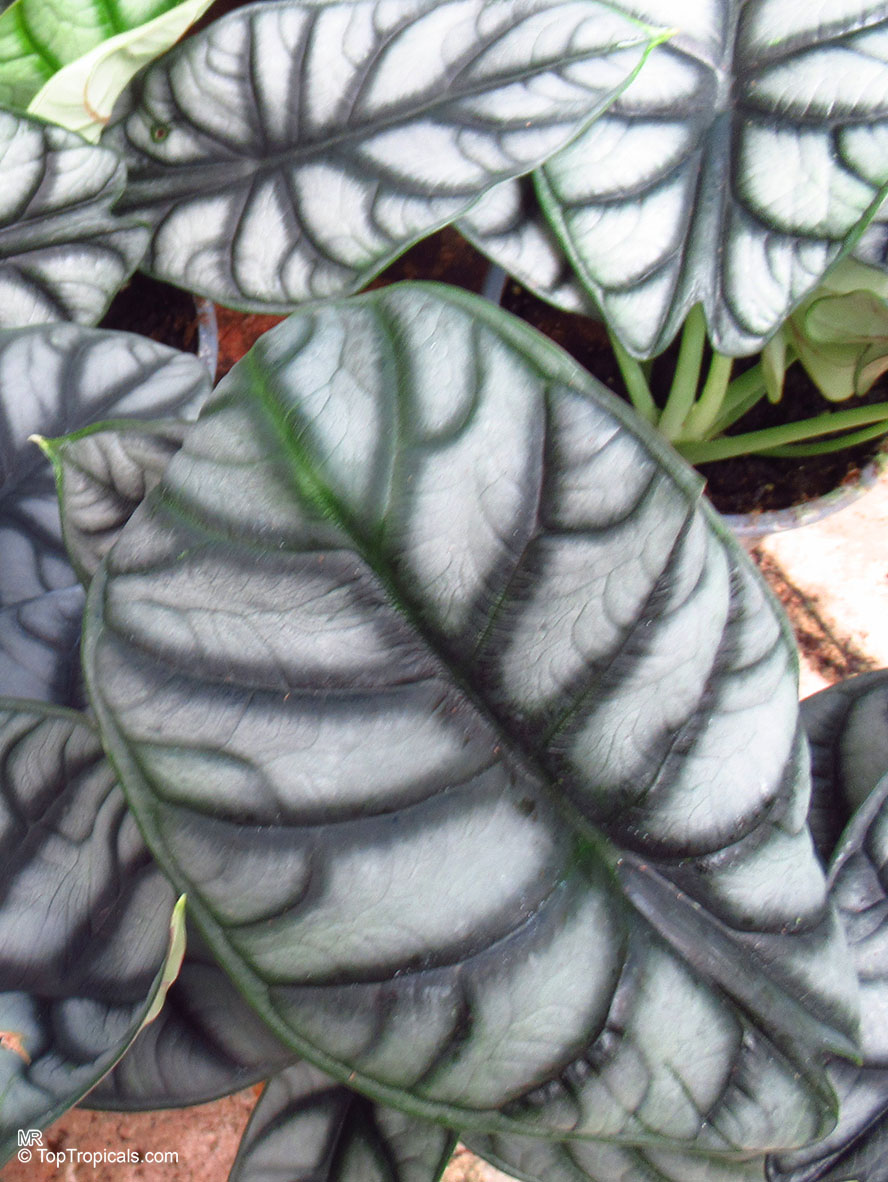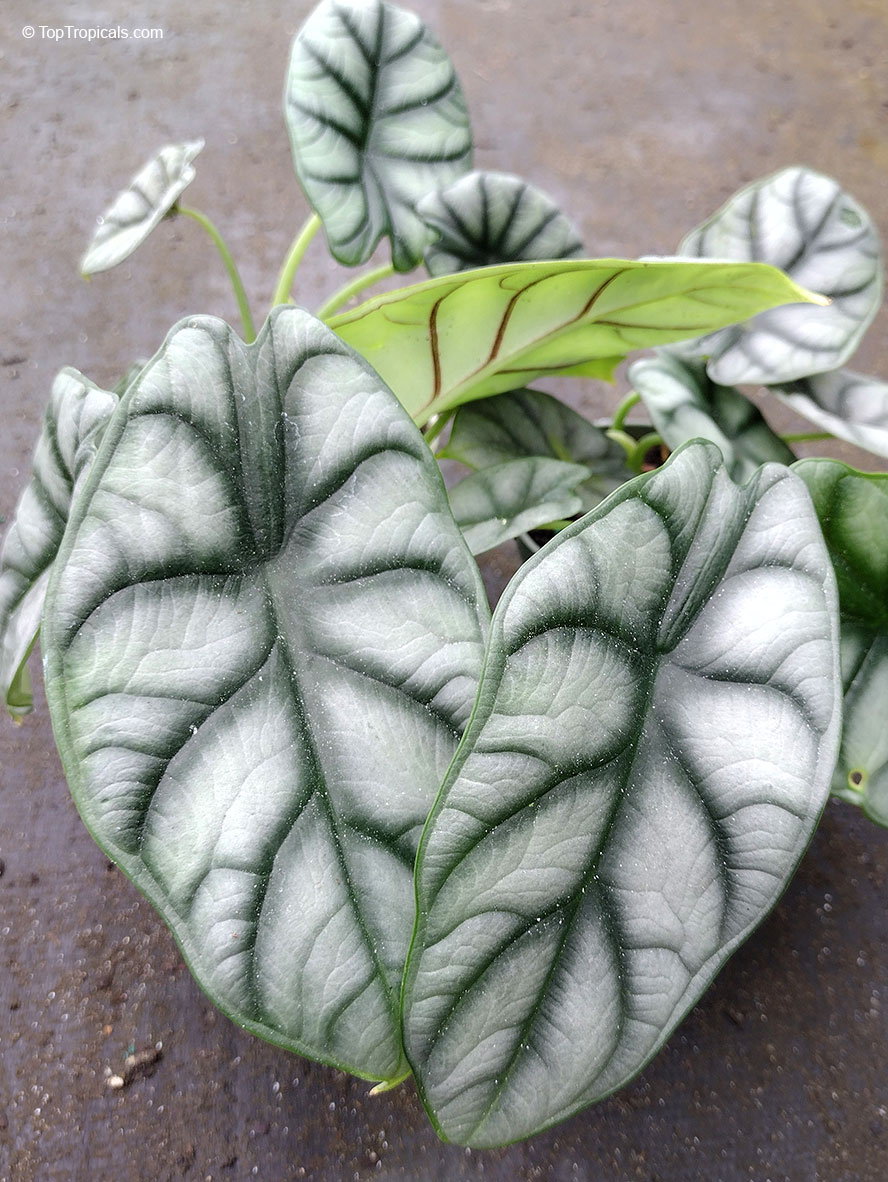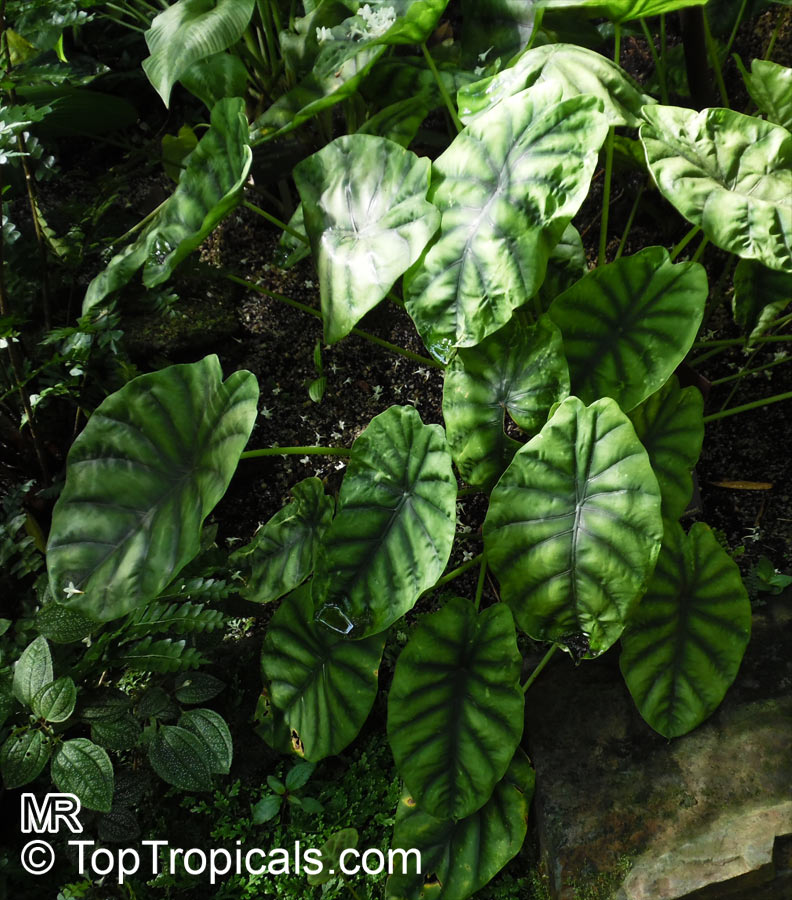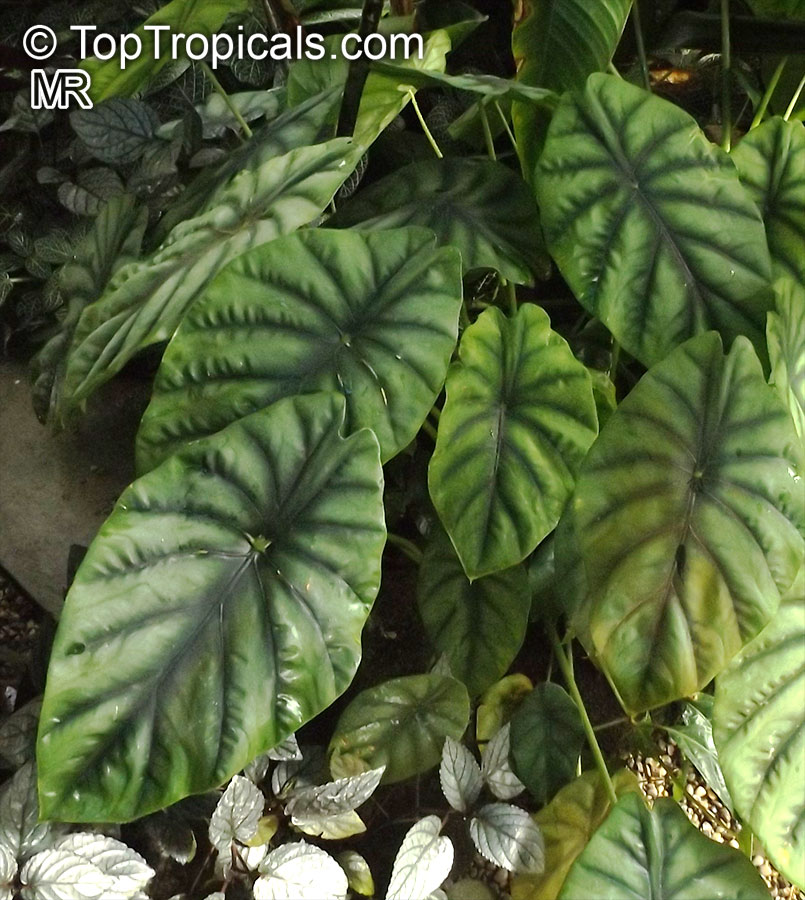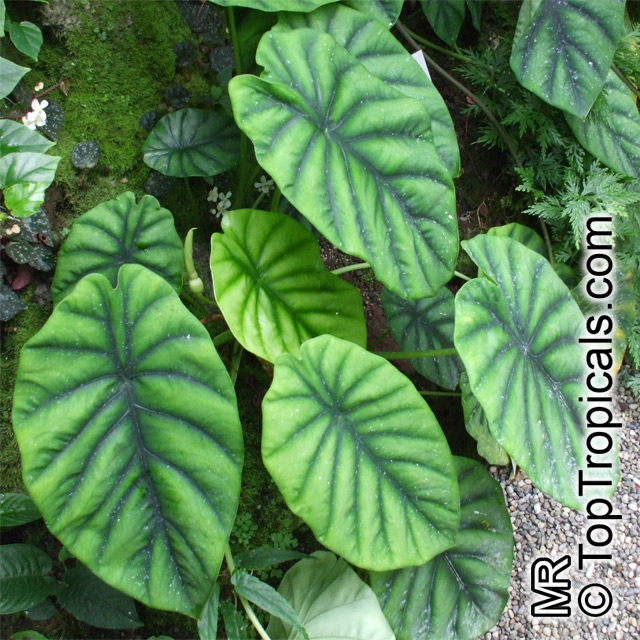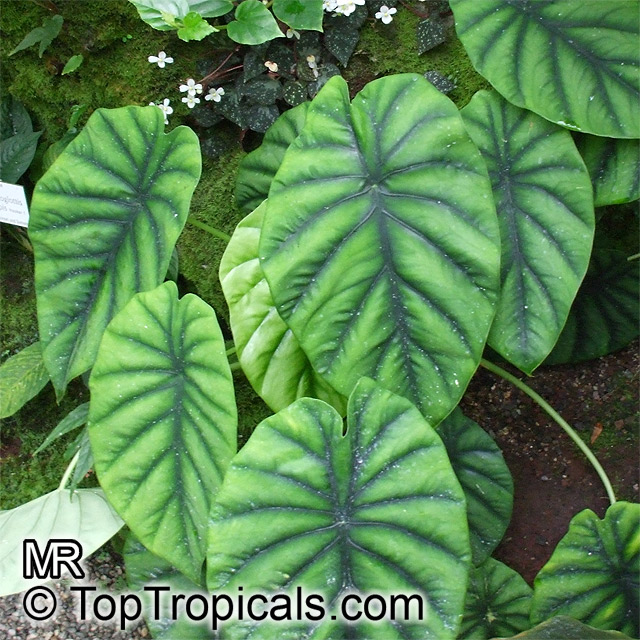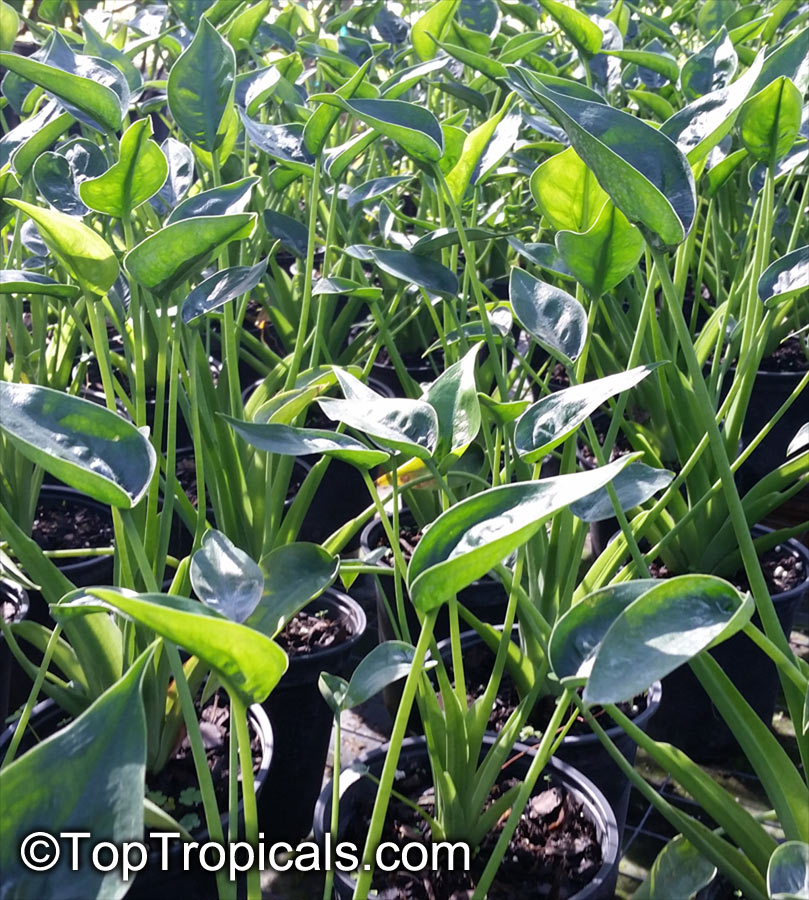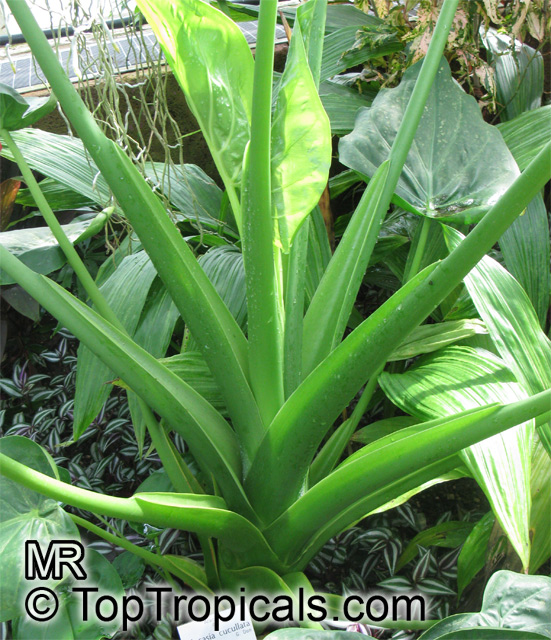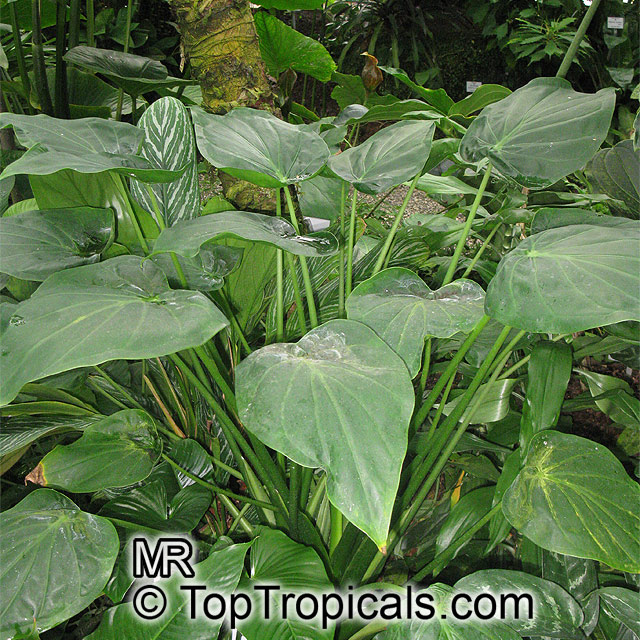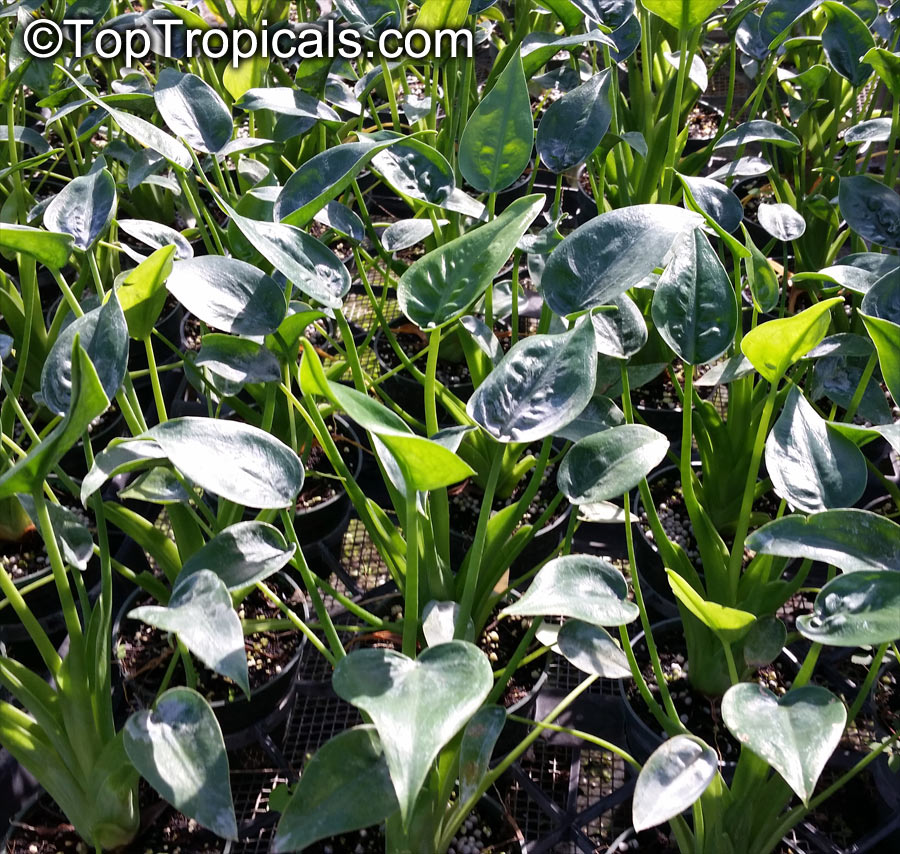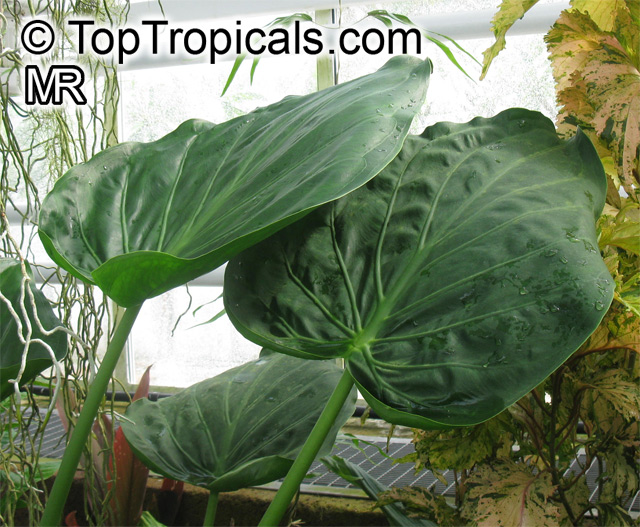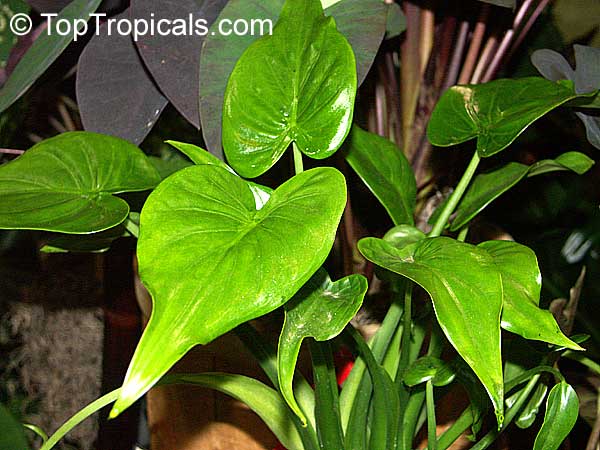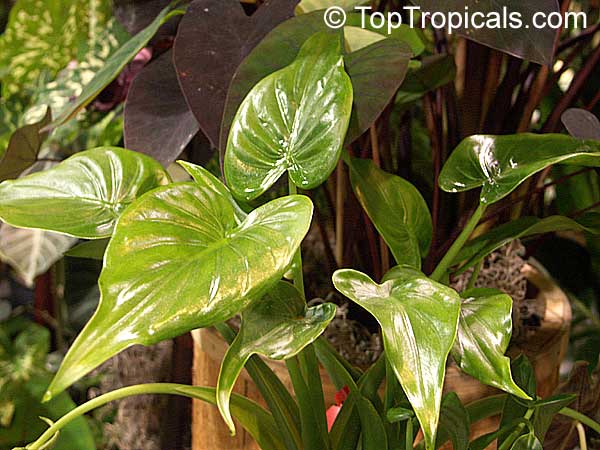Araceae - Botanical Family
Top Tropicals Plant Encyclopedia
| Number of plants found: 174 | Next | 
|
Go to page: | 1 | 2 | 3 | 4 | 5 | Last |
Botanical name: Adelonema pallidinervium
Common name: Adelonema
Family: Araceae
Origin: Ecuador





Aroid Adelonema pallidinervium is a rare member of the Araceae family. Adelonema are very similar to Homalomena, but are found in South America instead of Southeast Asia.
Because it poses a risk of burning the foliage, they cannot endure direct sunshine. However, bright diffused light is required for variegated forms in order to preserve the ornamental pattern of the leaves. High humidity is required for this species. However, they dislike being sprayed because doing so will cause fungal infections on the foliage.
It has an underground stem that grows approx. 10cm deep into the ground and then spreads laterally. These lateral shoots emerge from the soil at a relatively short distance from the mother plant and form new plants. It forms small, dense stands of plants.
Adelonema does best in a moist, warm terrarium and prefers a humidity of 60% or more. If you can offer it these conditions indoors, it can also be cultivated as a fairly problem-free houseplant.
Botanical name: Aglaonema commutatum
Common name: Poison Dart Plant
Family: Araceae
Origin: Philippines






Botanical name: Aglaonema costatum
Common name: Spotted Evergreen
Family: Araceae
Origin: Southeast Asia







Botanical name: Aglaonema nitidum
Common names: Chinese Evergreen, Painted Drop Tongue, Silver Evergreen
Family: Araceae






Aglaonema nitidum or Chinese Evergreen is a small evergreen shrub, typically growing anywhere between 2-5 feet tall. This ornamental foliage is incredibly versatile, making it a great addition to any home or garden. Aglaonema nitidum grows best in USDA zones 9-11 and prefers to be in partial shade or semi-shade, as an overexposure to direct sunlight can cause the leaves to burn. This plant requires moderate water, about once a week, in order to keep the soil moist.
When grown in a container, Aglaonema nitidum can be a great choice for indoor or outdoor locations, making it an ideal houseplant. As a smaller shrub, it is perfect for those looking for a smaller, evergreen bush to brighten up their space. Additionally, Chinese Evergreen is a great option for gardeners in cold regions, since it can be easily moved indoors during the winter season.
When caring for Aglaonema nitidum, special attention must be taken to the soil and container it is placed in. When grown in a container, the soil should be kept consistently moist, and allowed to dry slightly between waterings. The container must be well-draining, and should be placed in a section of the garden that gets partial shade or semi-shade. If grown indoors, it should be placed in an area that receives bright, indirect sunlight. When any new leaves appear, it is important to avoid any contact with the irritant sap they produce.
Overall, Aglaonema nitidum is a great addition to any home, thanks to its evergreen foliage and small size. It is a very versatile plant and can tolerate both direct and indirect light, making it easy to accommodate it in any living space. With the right soil, container, and proper care, Chinese Evergreen can be a great addition to any garden.
Botanical name: Aglaonema rotundum
Common name: Chinese Evergreen
Family: Araceae
Origin: Sumatra





This small plant is native to Sumatra, and it is an easy-care plant. It is suitable for the most interiors, with indirect, or semi-shade light. The Aglaonema rotundum (Chinese Evergreen) prefers moderate water, about once a week. The soil should be kept moist, but not wet and do not over water. It does not need high humidity, as damp air can easily cause root rot. You can fertilize Aglaonema rotundum once a month, but be careful not to over-fertilize. The foliage is often variegated, with white and pink marbling, giving the plant an ornamental aspect.
Grown in USDA Zone 9-11, Aglaonema rotundum can be grown successfully in pots in cooler regions. A sunny, warm spot and a light, well-drained soil are ideal for successful cultivation. Pruning is not necessary for Aglaonema rotundum, however, dead or diseased foliage should be removed to allow new leaves to grow.
Botanical name: Aglaonema sp.
Common name: Chinese Evergreen
Family: Araceae
Origin: tropical Asia and Africa
Hardiness: 35°F





They are grown for their ornamental foliage in homes, greenhouses, and in the outdoors, where climates allow.
These plants should have a moist, but well drained, heavy soil. It will live for long periods in water and in spots with poor light; though bright, indirect sunlight or partial shade is best. Water moderately and maintain a fairly humid atmosphere. Keep them drier throughout the winter.
Botanical name: Aglaonema sp.
Common name: Aglaonema 'King of Siam'
Cultivar: King Of Siam
Family: Araceae







Botanical name: Alocasia baginda
Common name: Alocasia Dragon Scale
Family: Araceae
Origin: South Asia





Alocasia baginda, commonly known as the Dragon Scale, is a small shrub native to South Asia growing between two to five feet tall. It is an ornamental plant known for its lush foliage which is heart shaped and has notable veins in its lower side. Many varieties exist with slight differences from the main species.
Alocasia baginda require regular watering and can be grown in semi-shade and places receiving moderate sunlight. It requires very little maintenance and can thrive in slightly acidic soil with good drainage. As perennial plants, they can survive for many years in the same pot.
In colder regions, it''s important to follow certain tips for growing the Alocasia baginda in a pot. Choose a pot with good drainage and a soil mix with a good ratio of organic material such as peat moss, manure, and compost. If the soil is too dense, it can be supplemented with sand and perlite. The potting mix should be able to retain moisture and retain nutrients.
It is also ideal to keep the pot in a sheltered area which receives some light, although not too much. As the Alocasia baginda likes moisture, watering the plant once daily is suggested. During colder months, it is best to water the plant less frequently, ideally when the top soil is dry. Adding a layer of mulch on top of the soil can also help retain moisture and control weeds. Fertilizing the plant once every three months is recommended for optimal growth.
Botanical name: Alocasia clypeolata
Common name: Green Shield Alocasia
Family: Araceae
Origin: Philippines




Botanical name: Alocasia cucullata
Common names: Lucky Leaf, Heart Shaped Elephant Ear, Buddha's Hand
Family: Araceae
Origin: Tropical Asia




It forms a tall trunk or stem in time and has a crown of delicate heart shaped, 3 to 6in leaves of solid green.
| Next |  |
Use link to repeat this search:
https://toptropicals.com/cgi-bin/garden_catalog/cat.cgi?search_op=and&keyword_op=and&language=e&family=Araceae&number=10
&no_change_lang=1&user=tt&sale=1&first=0
